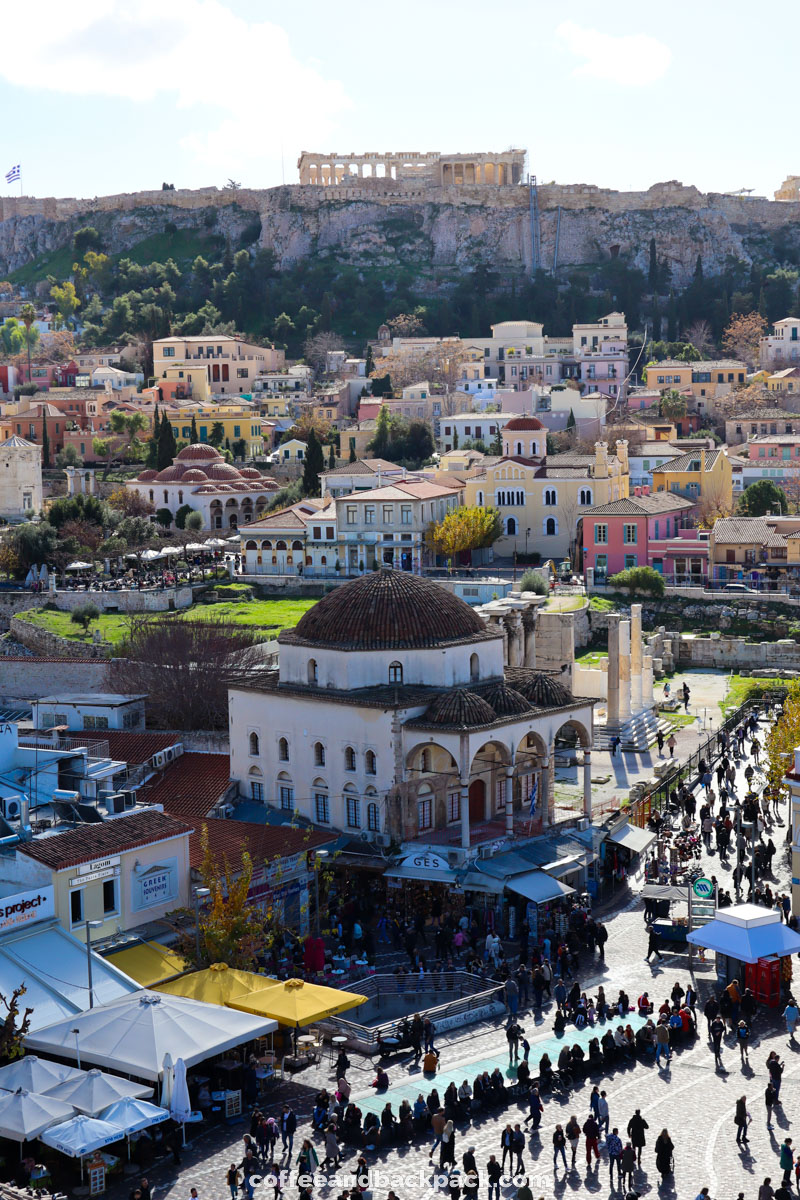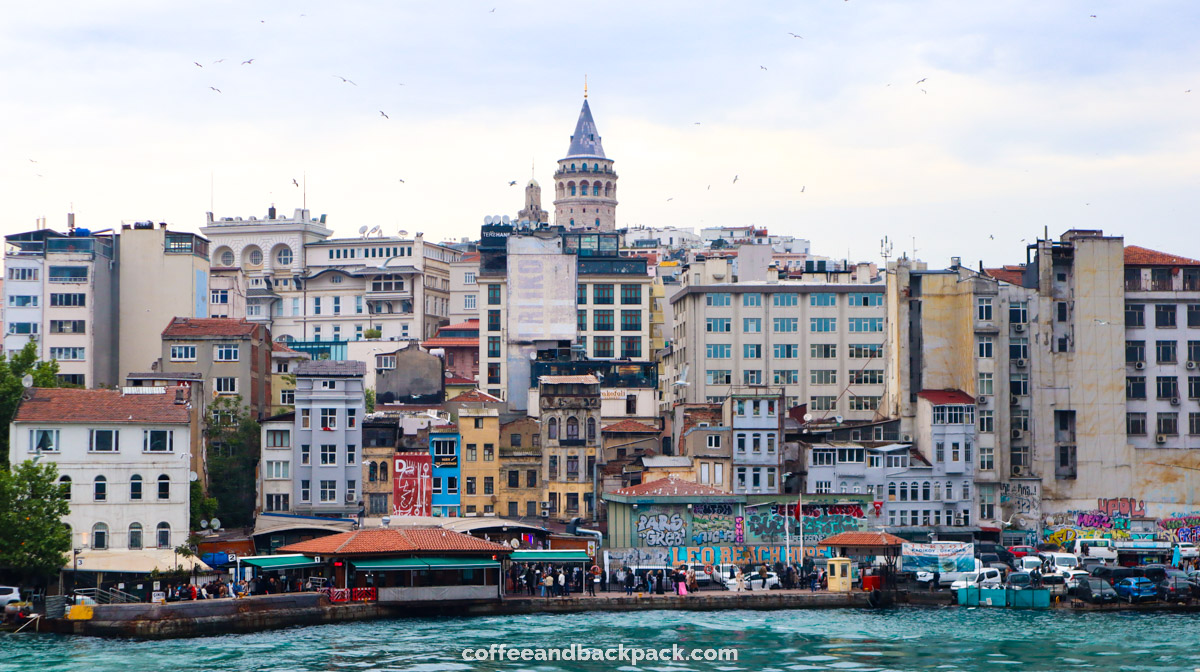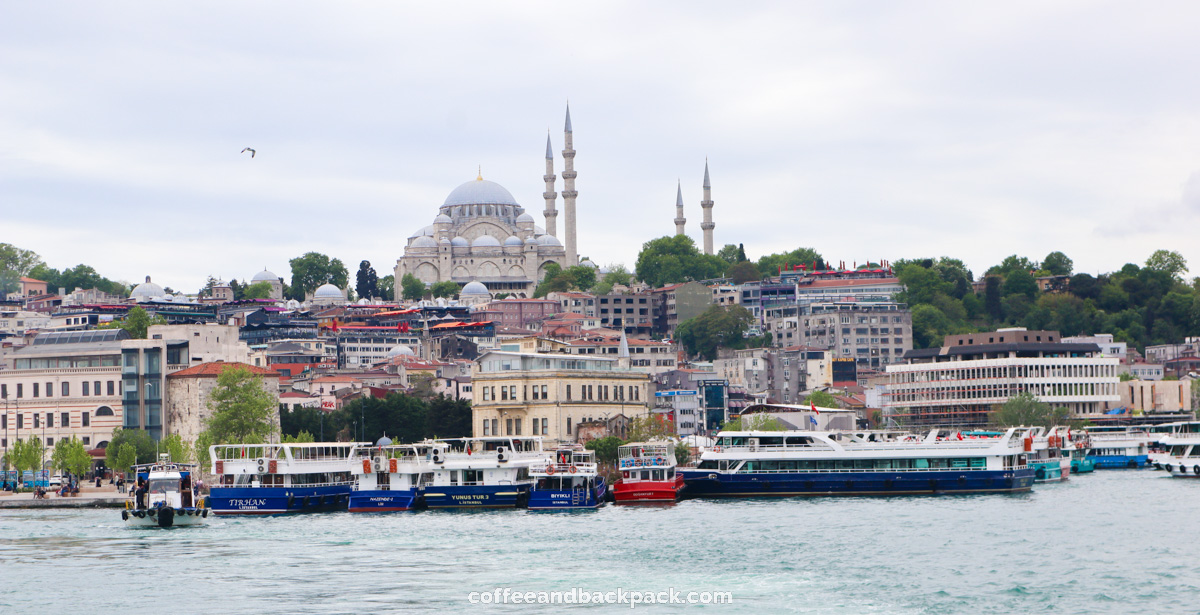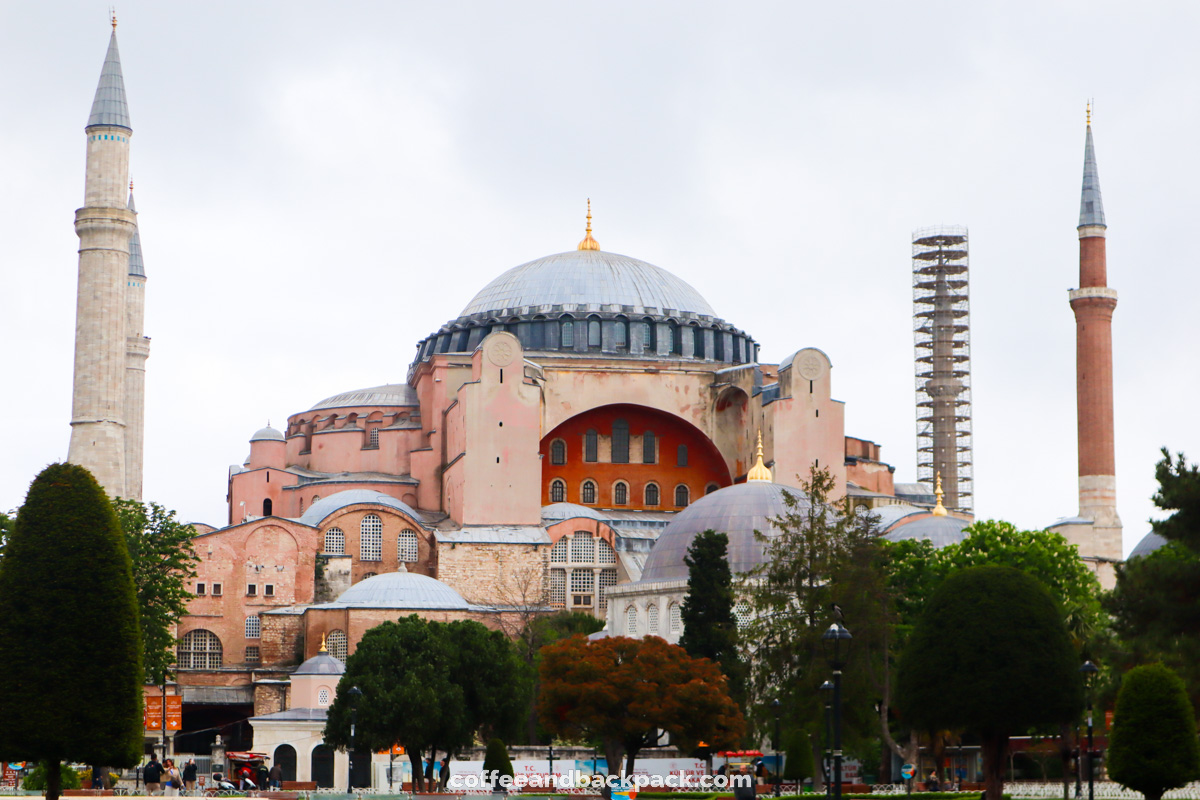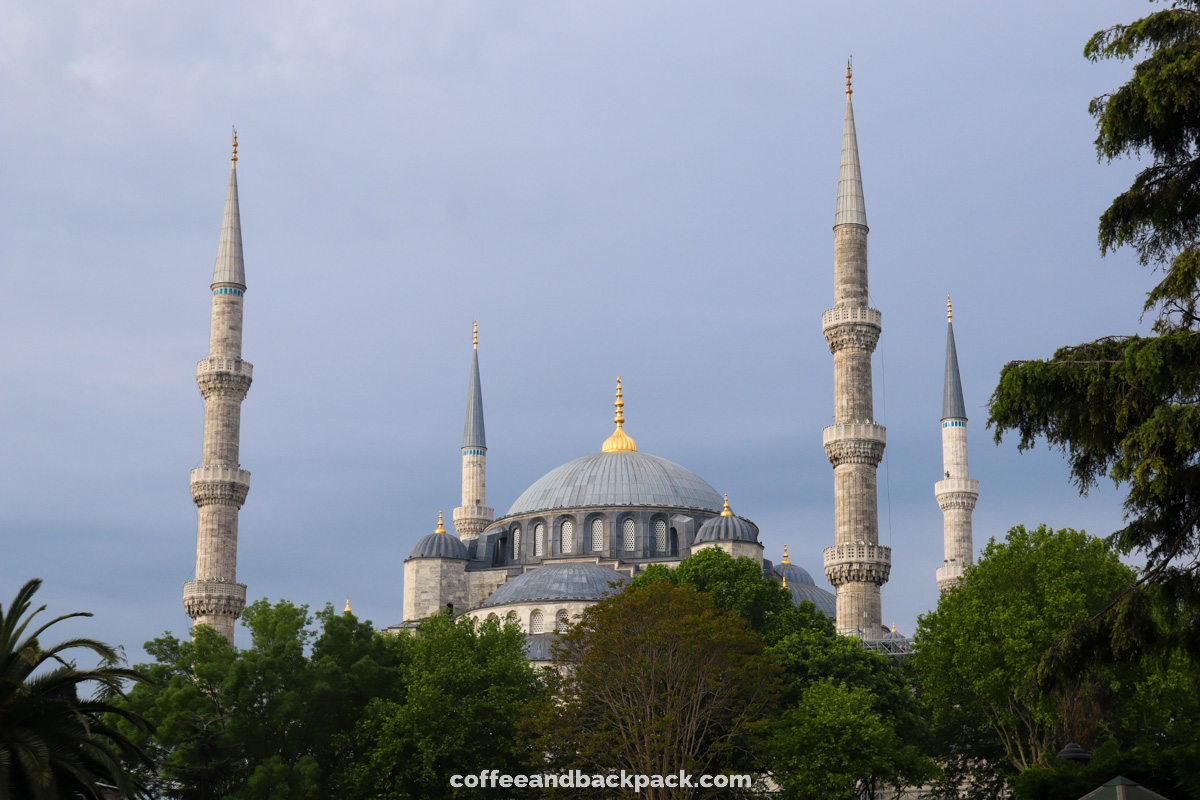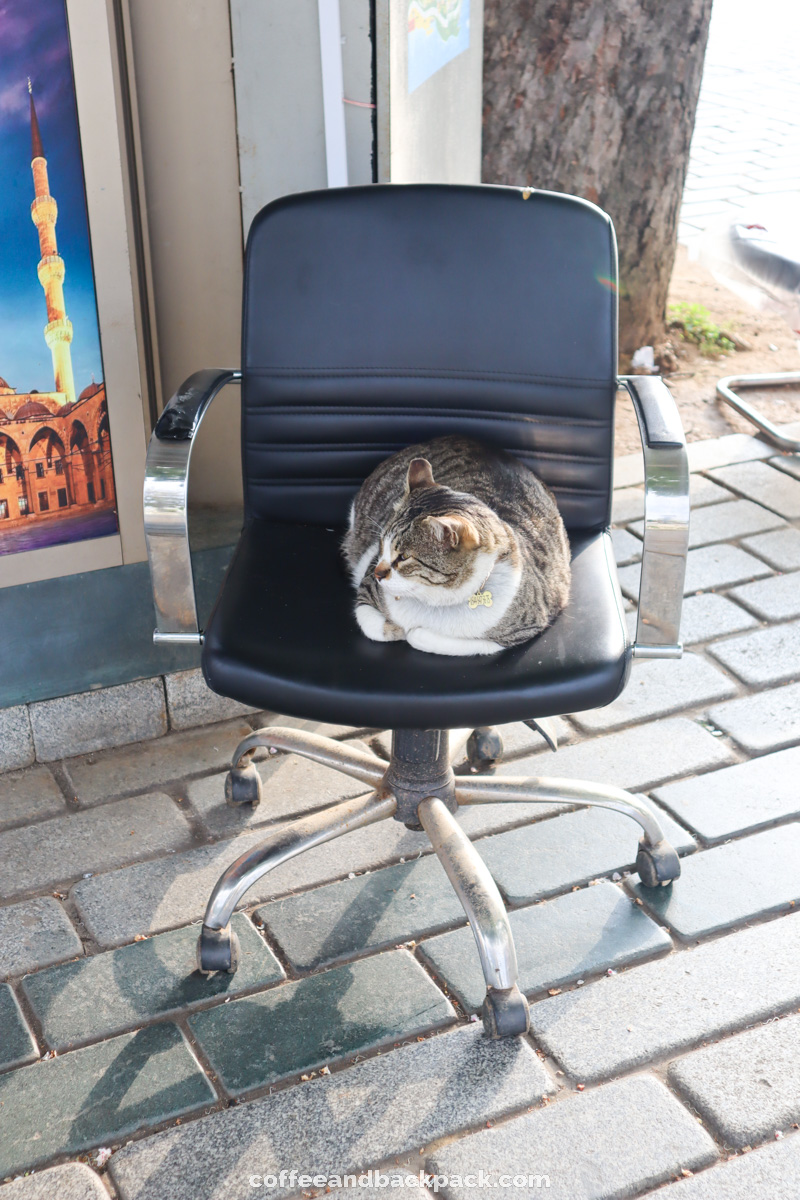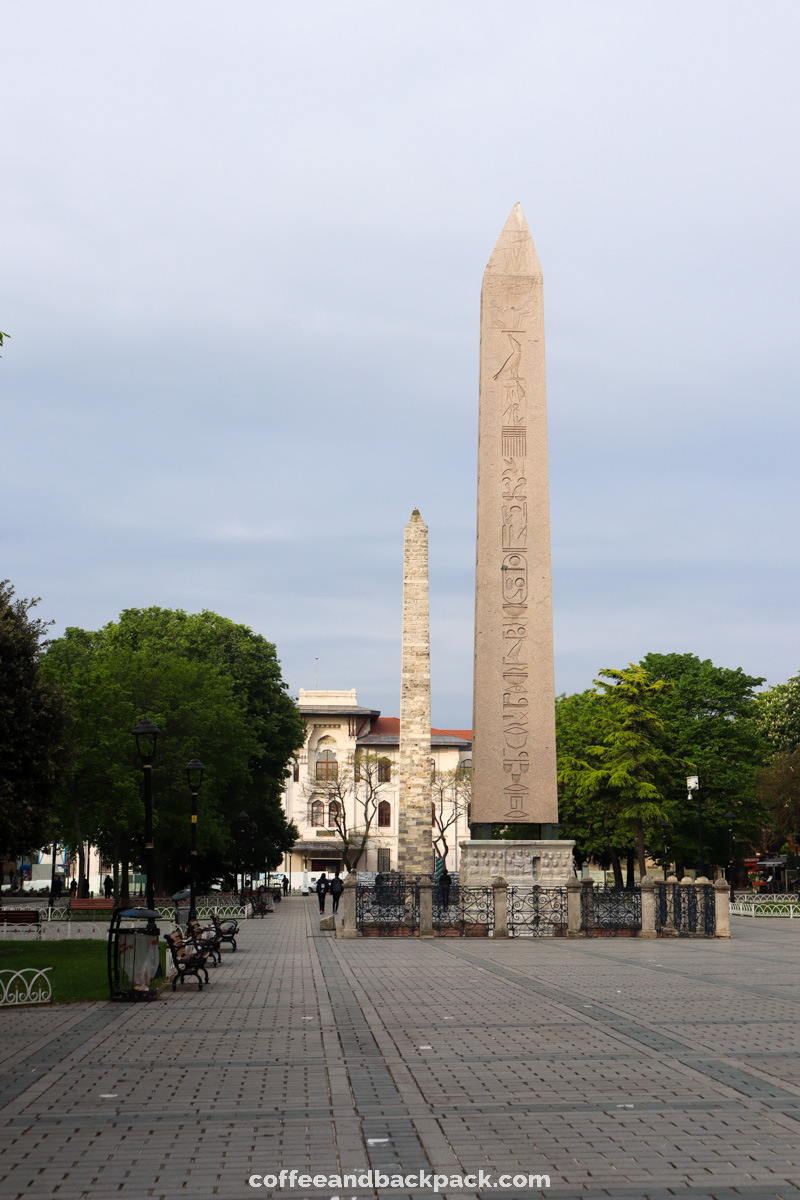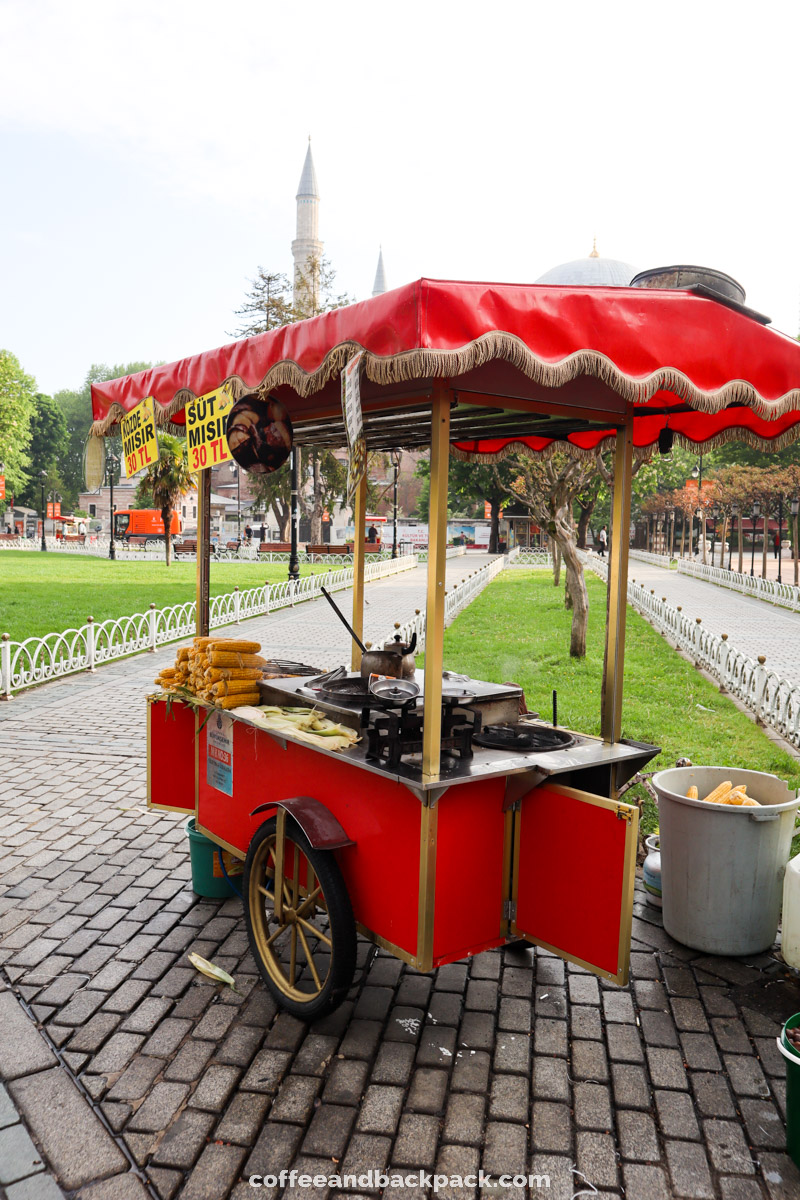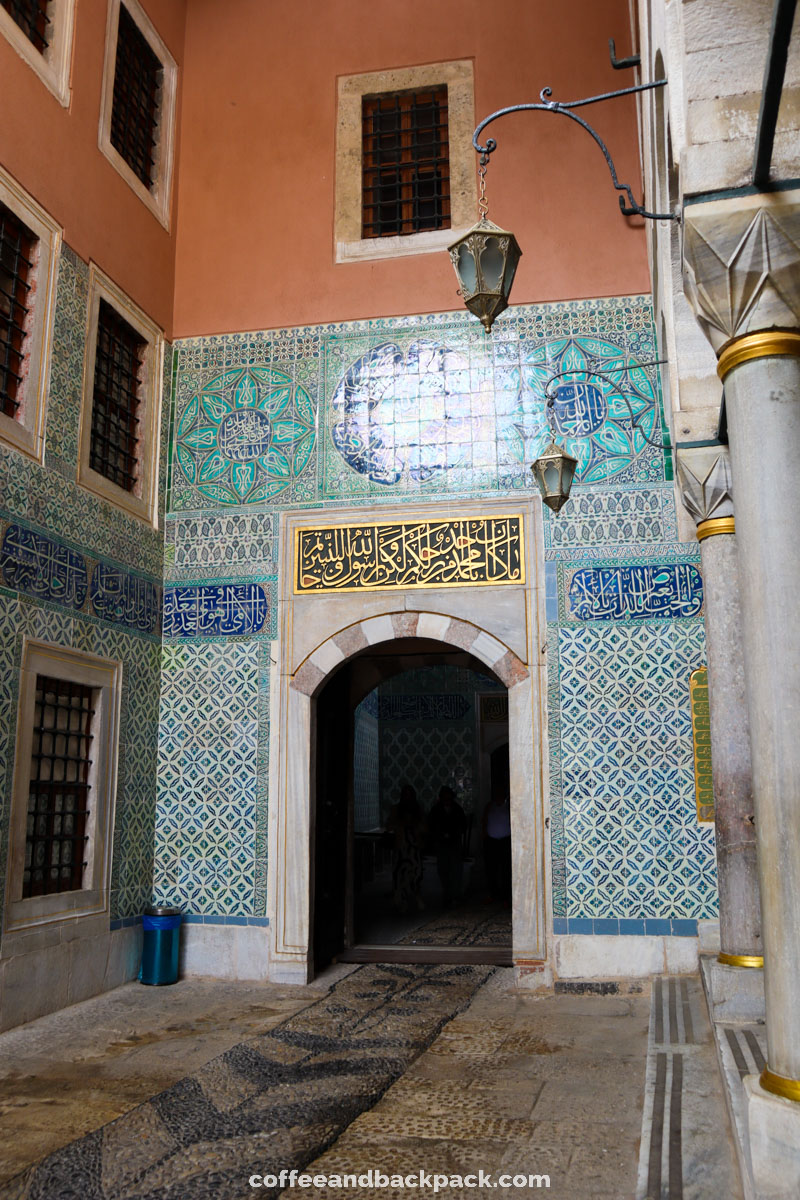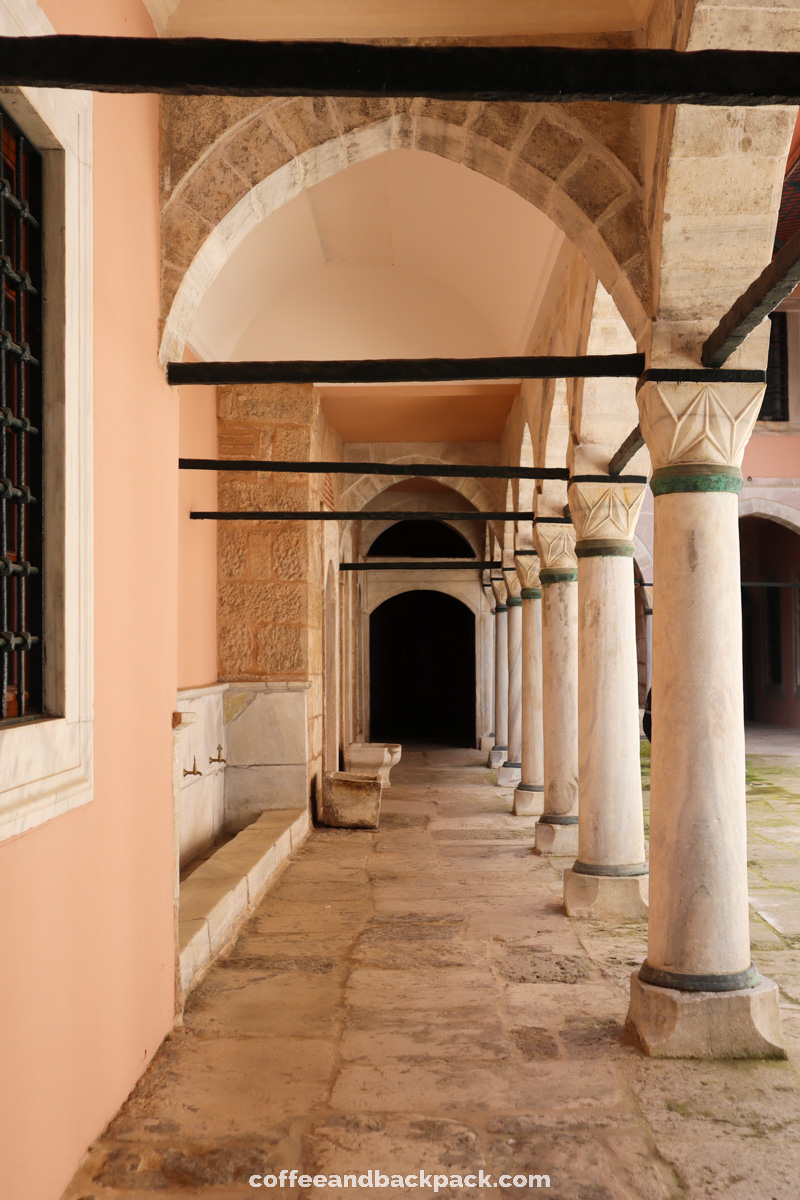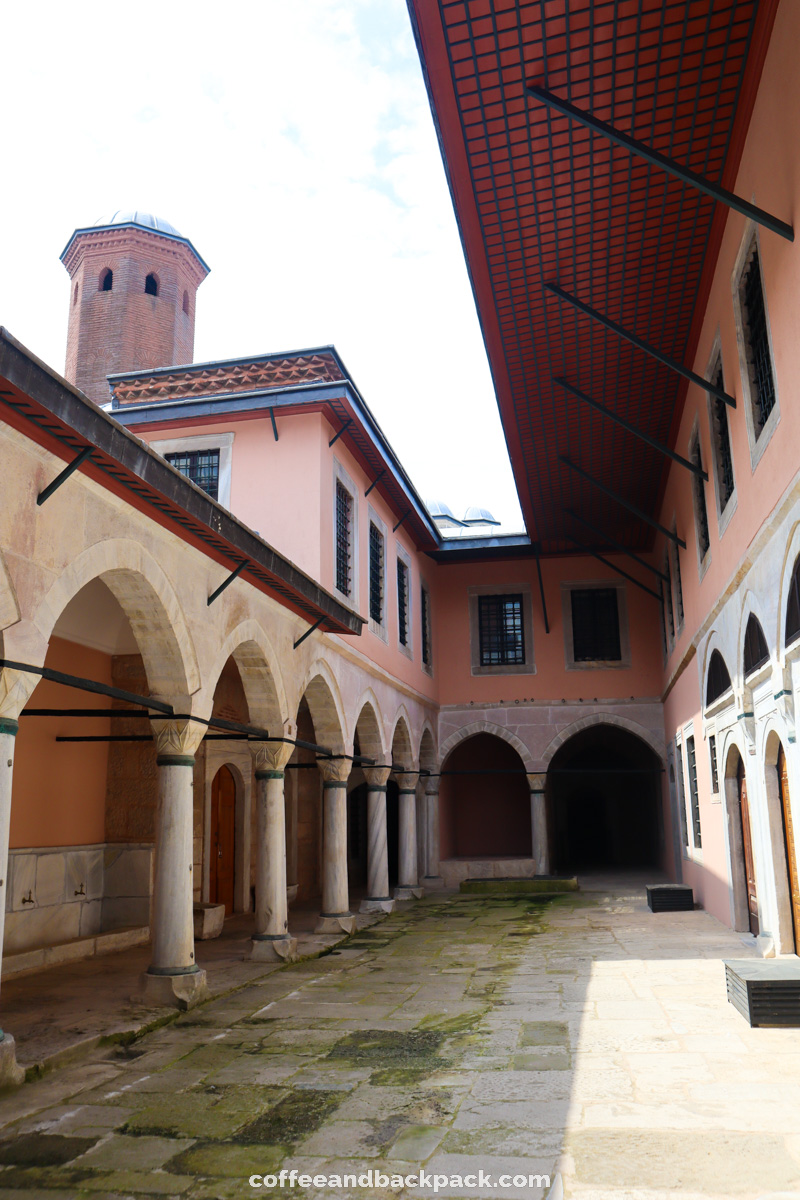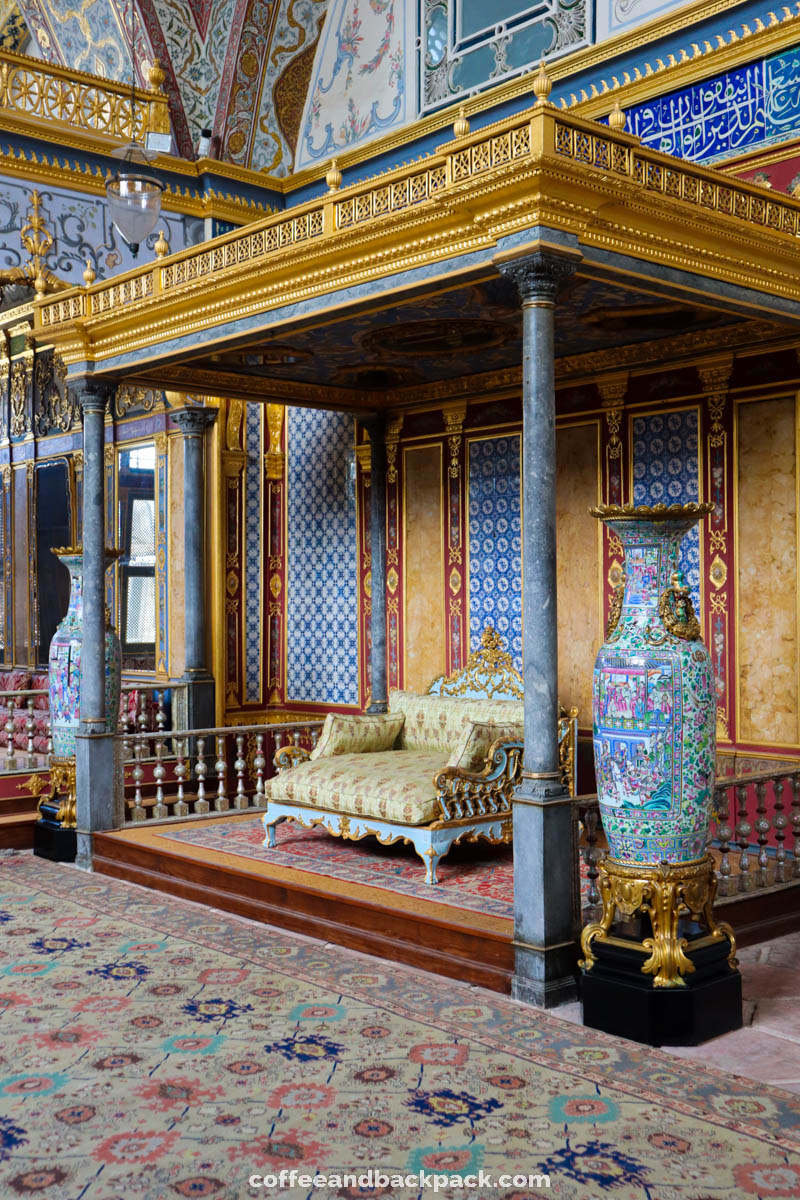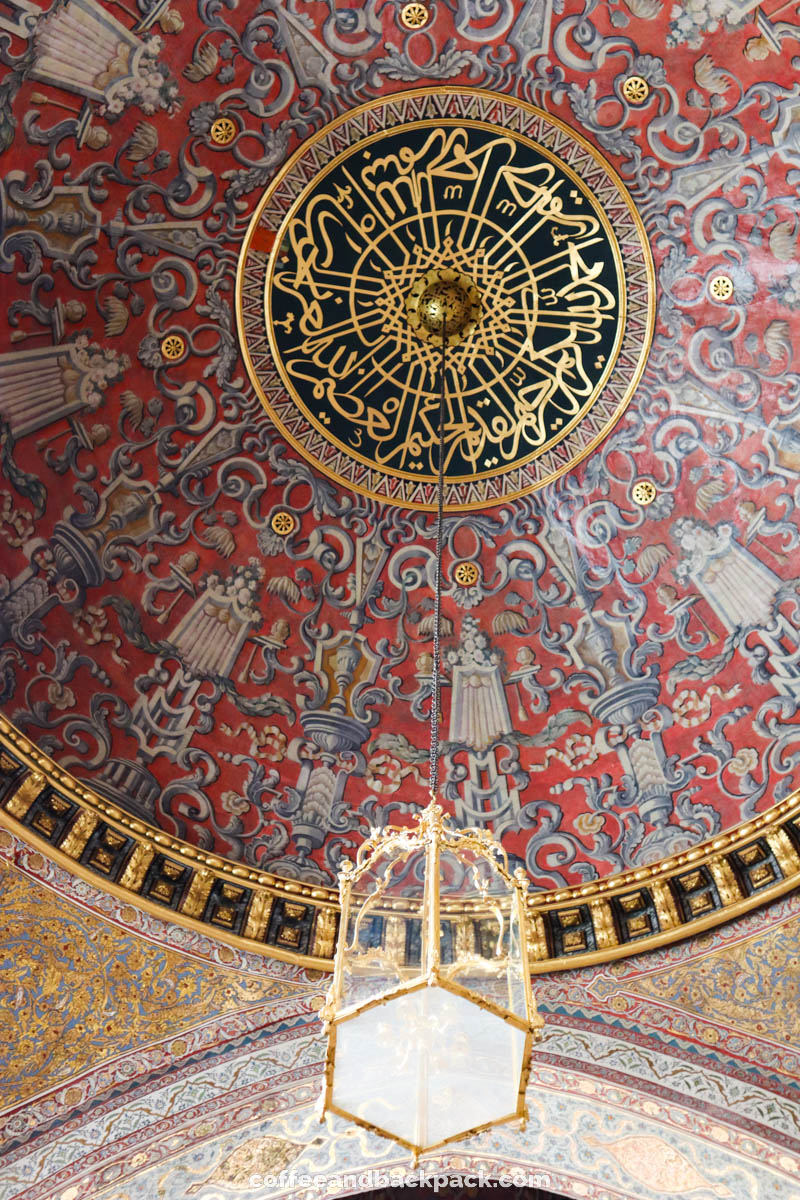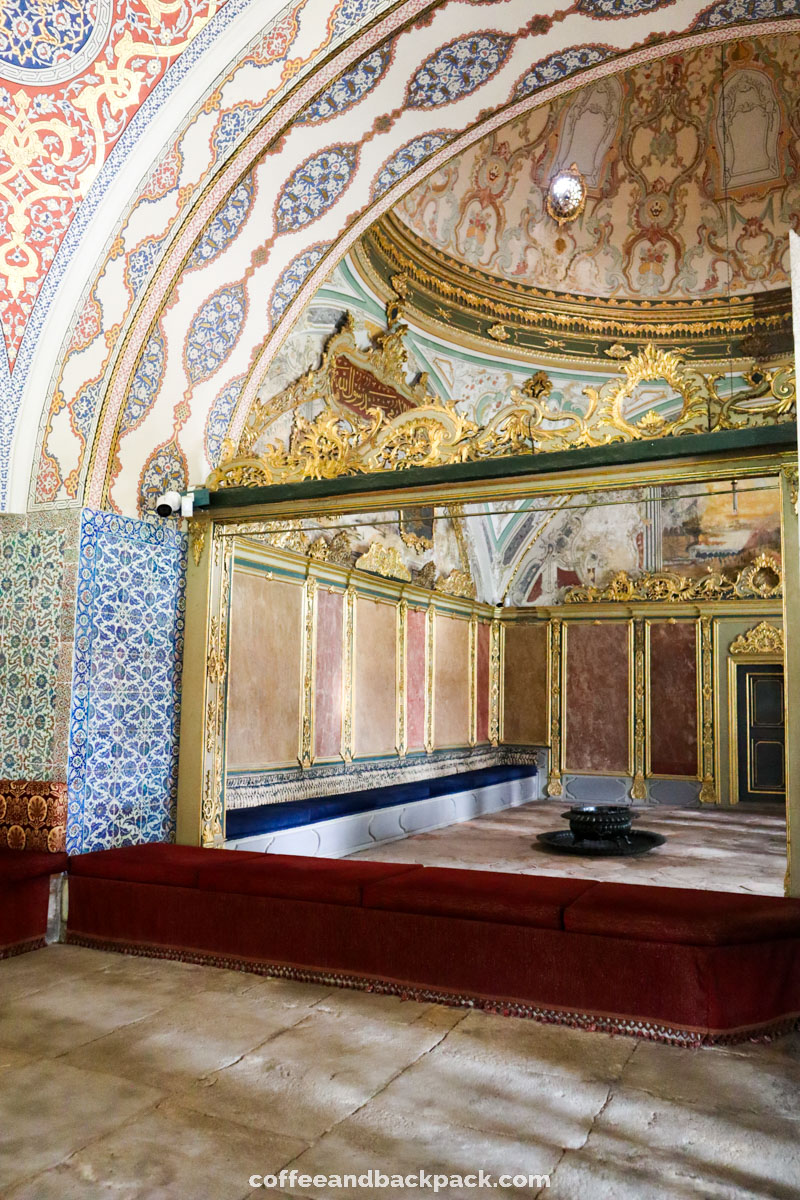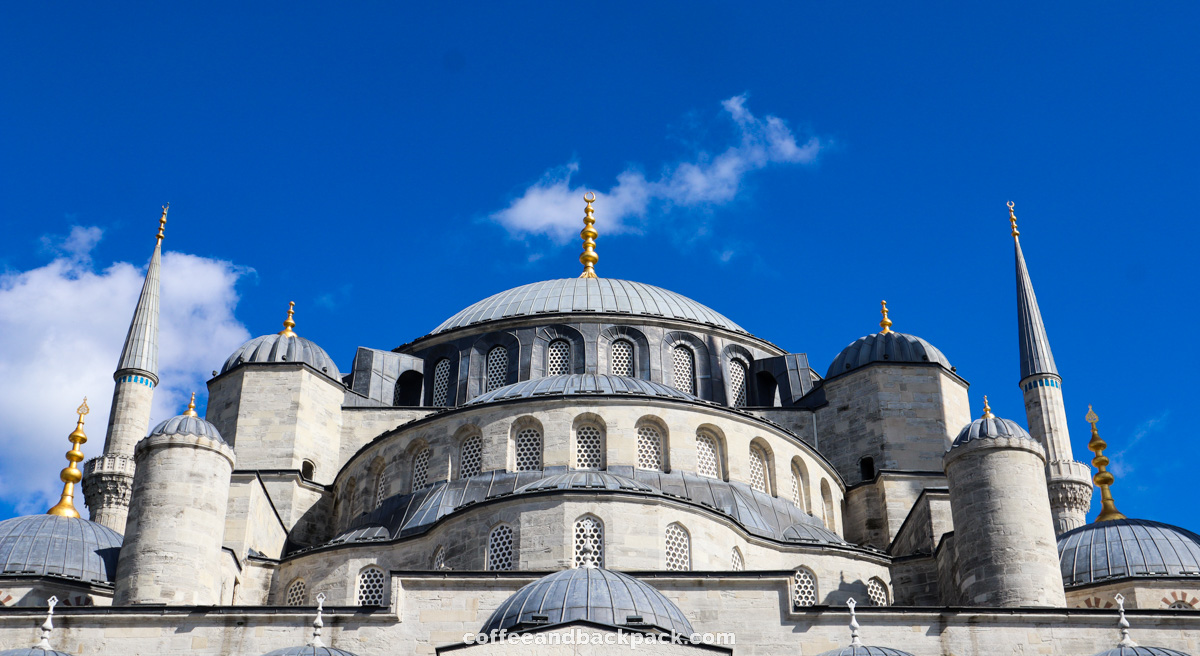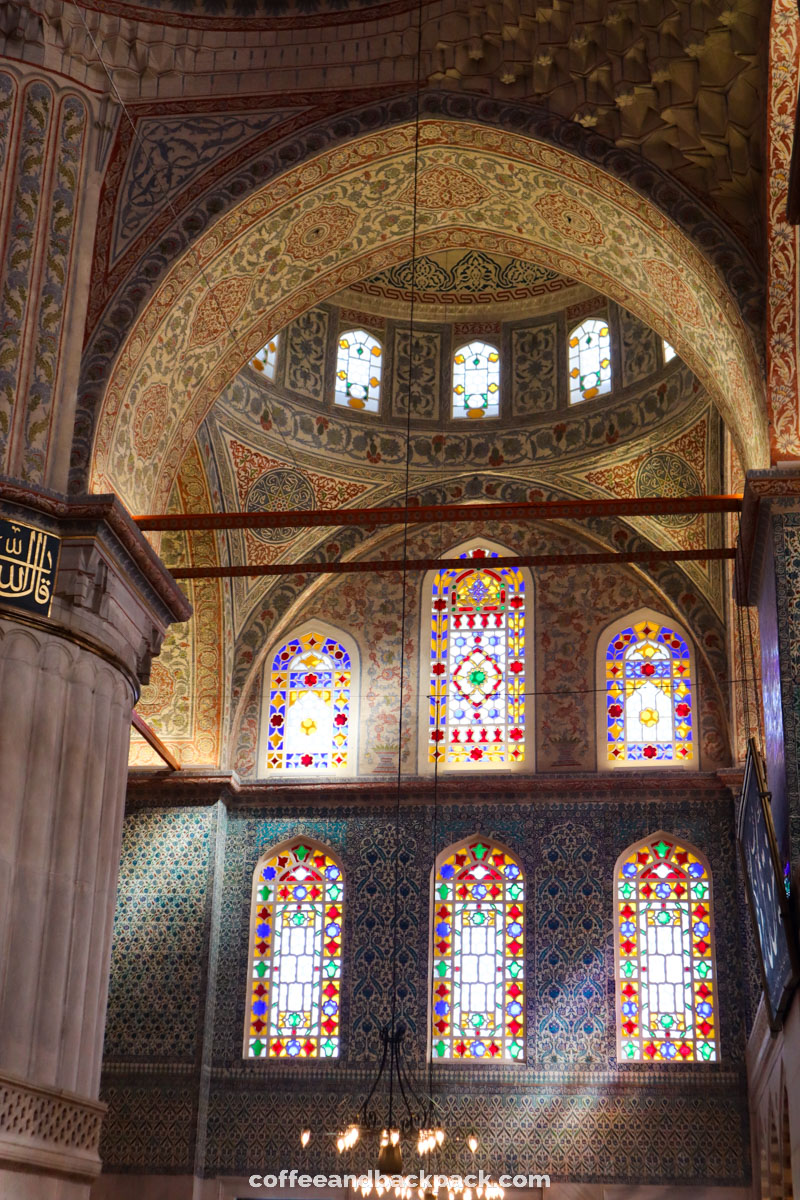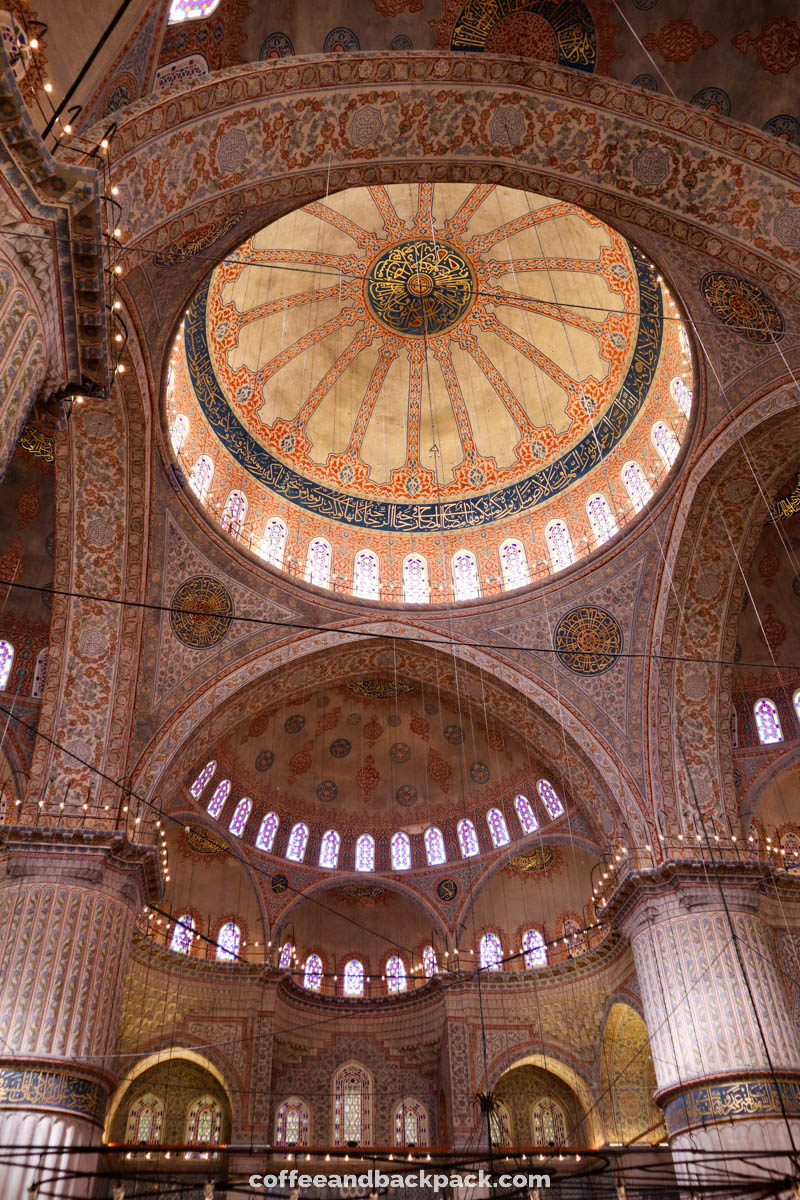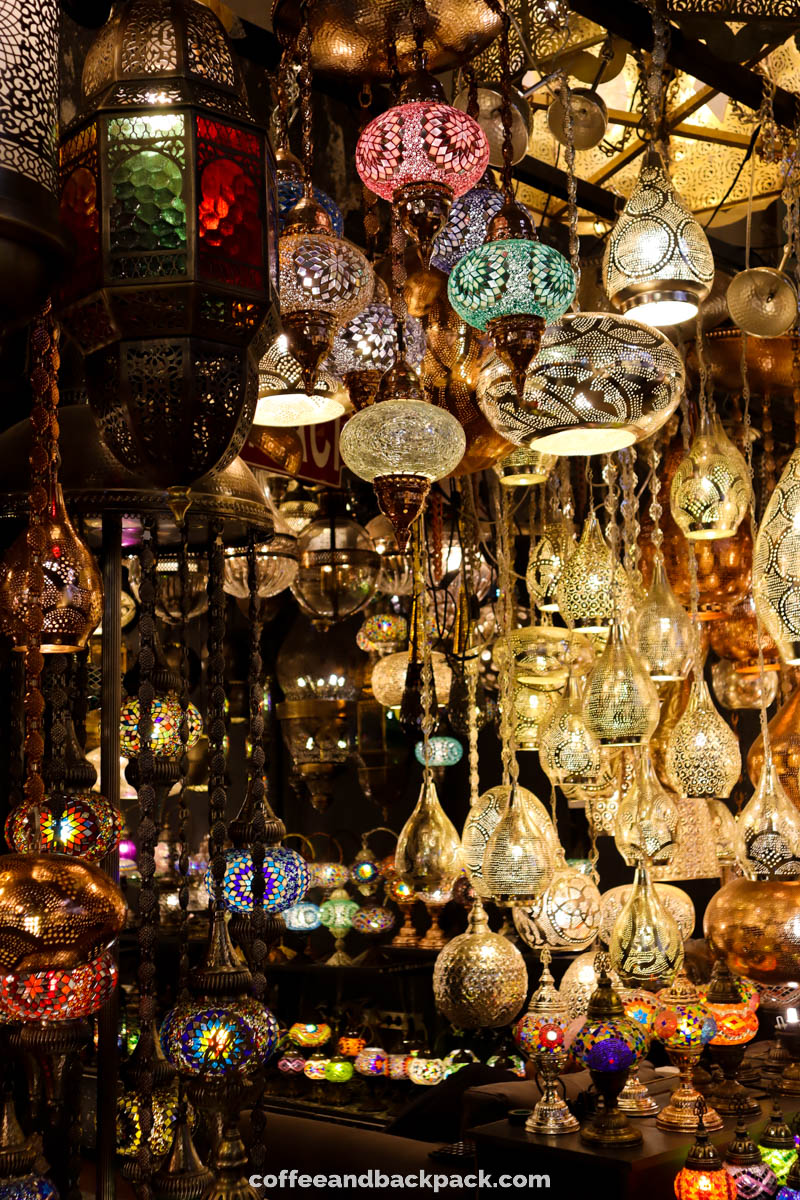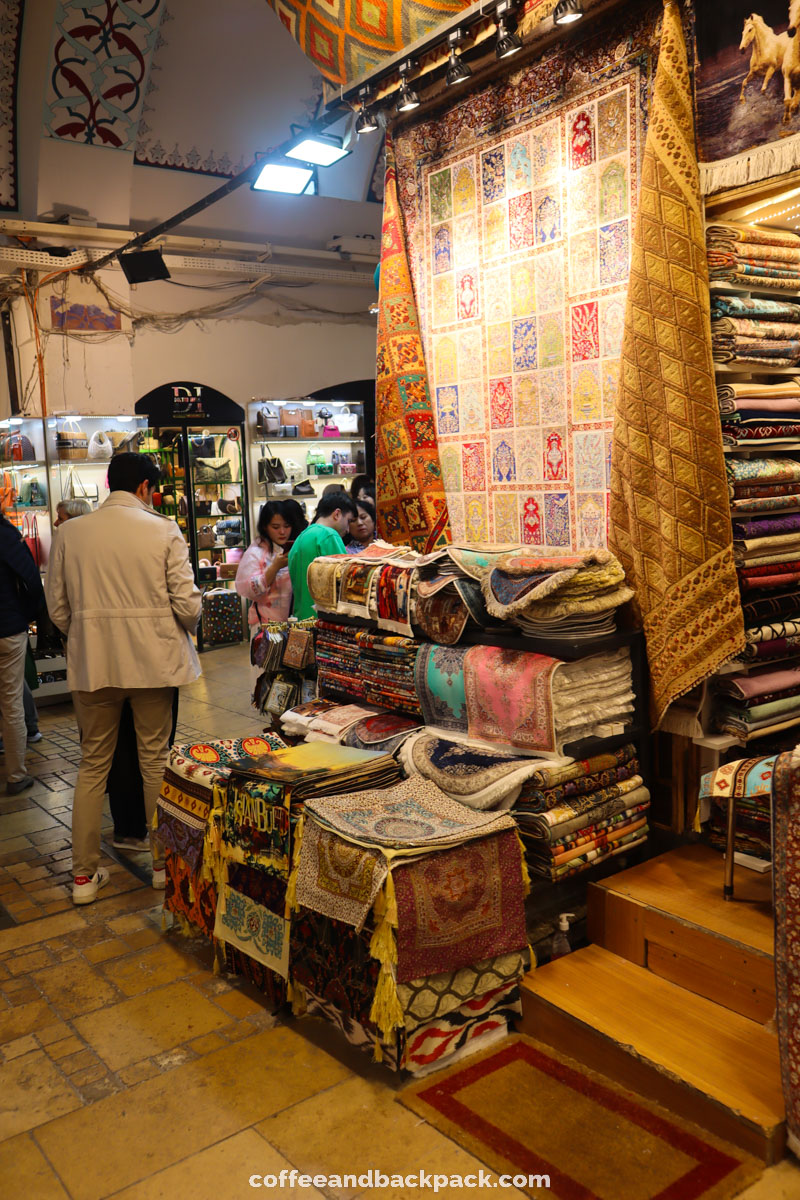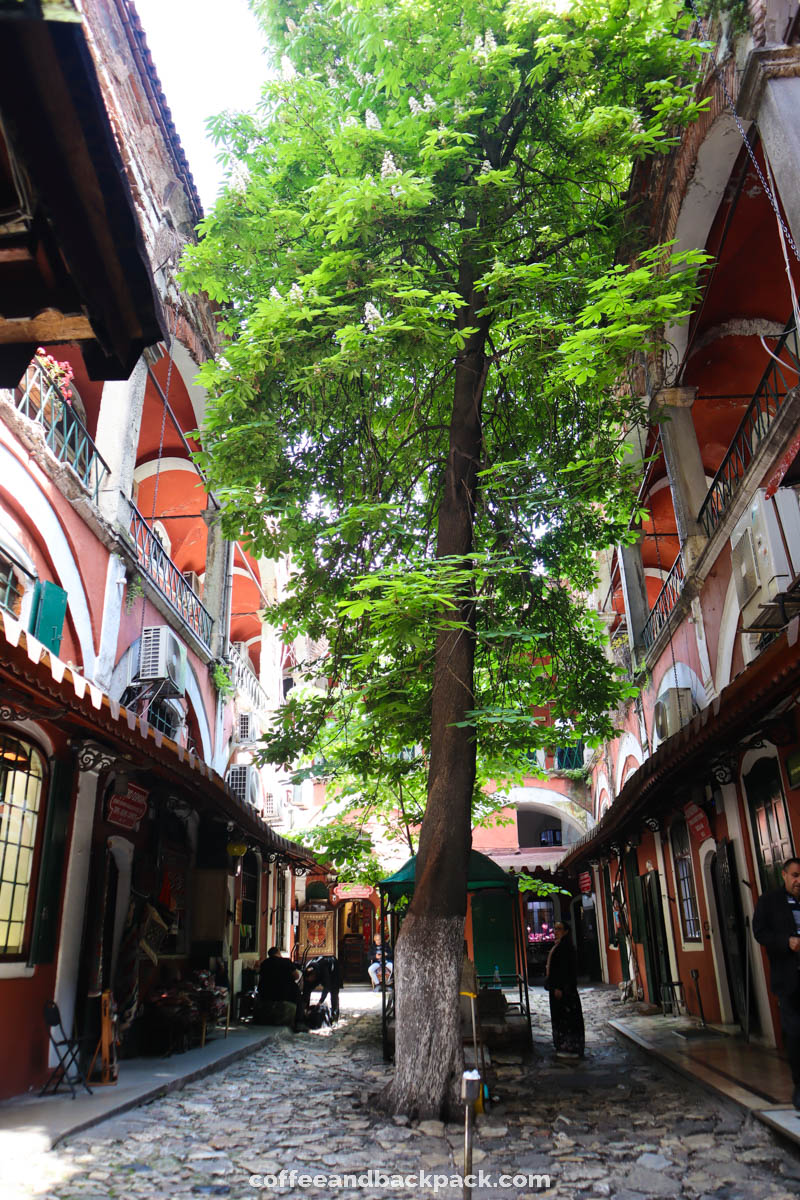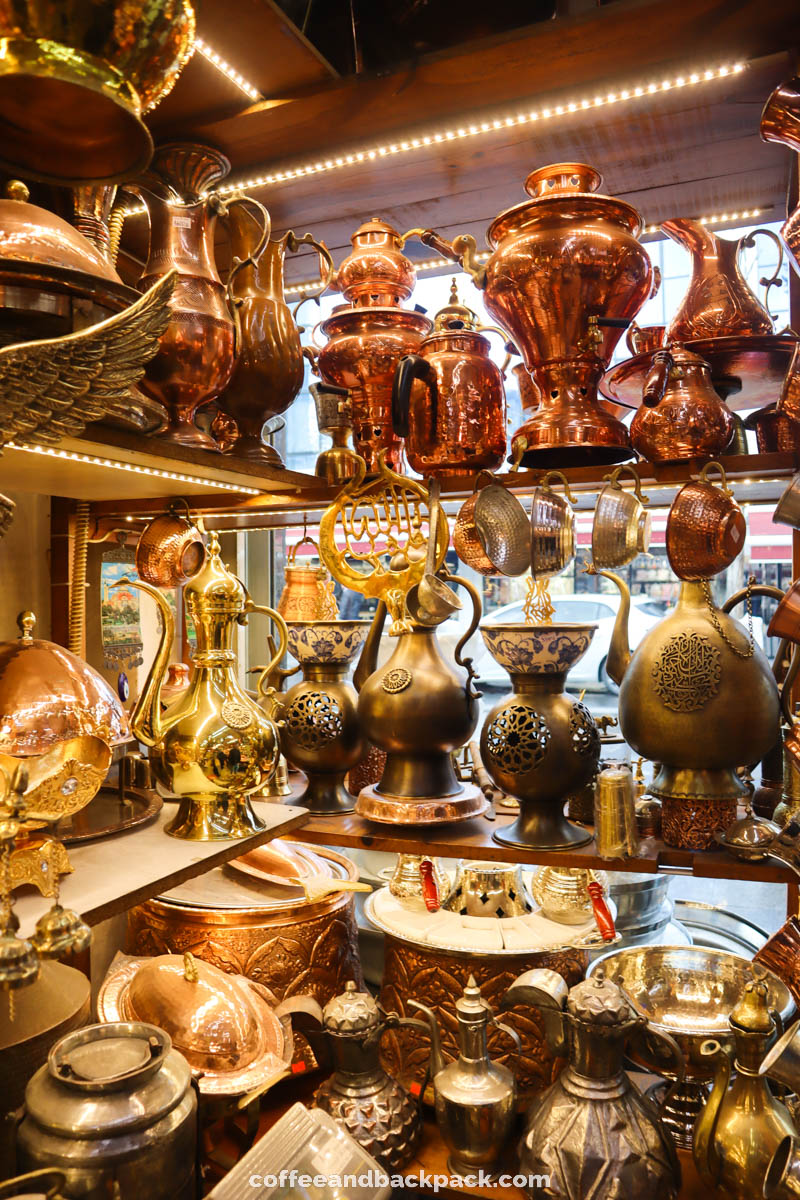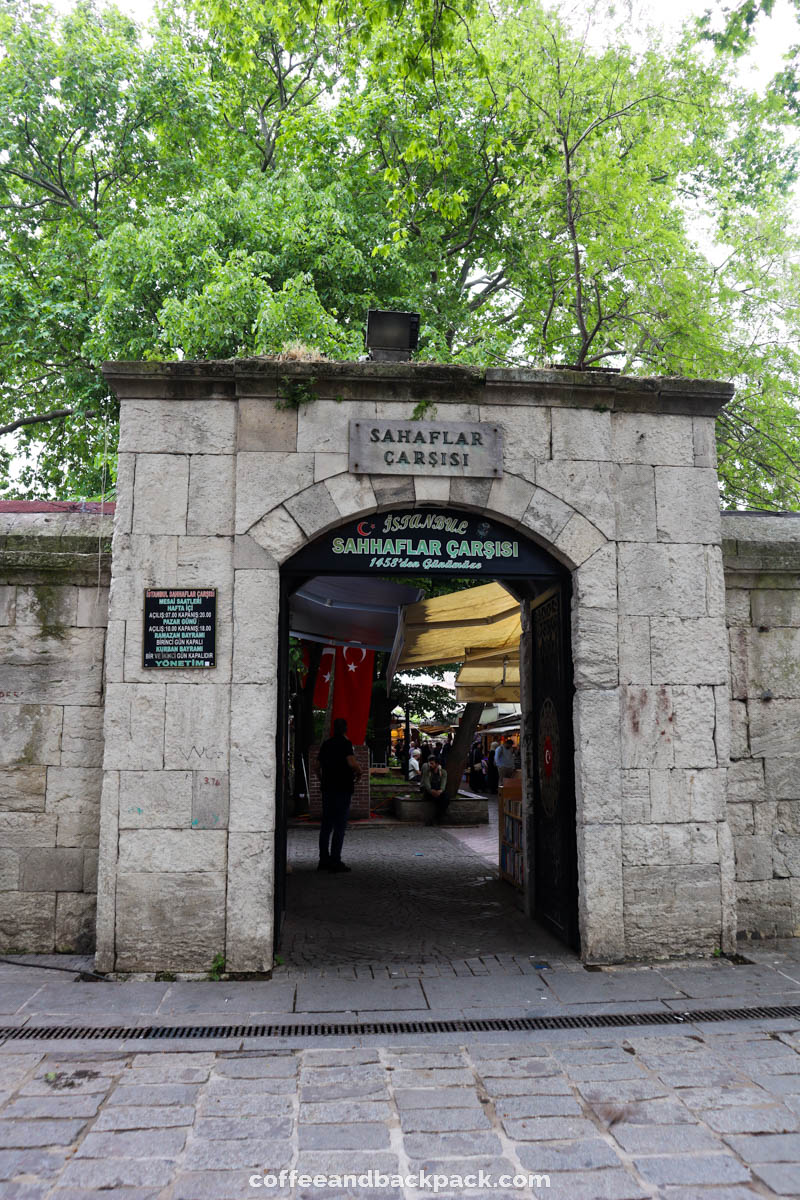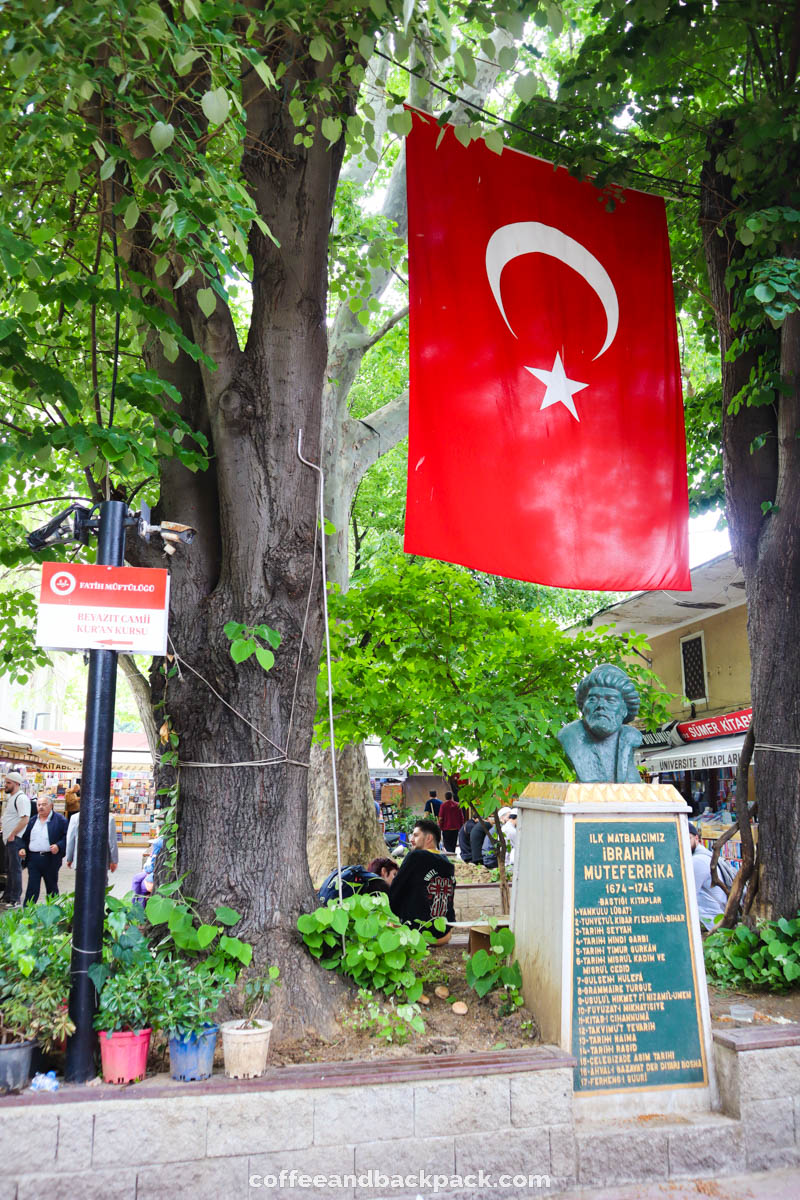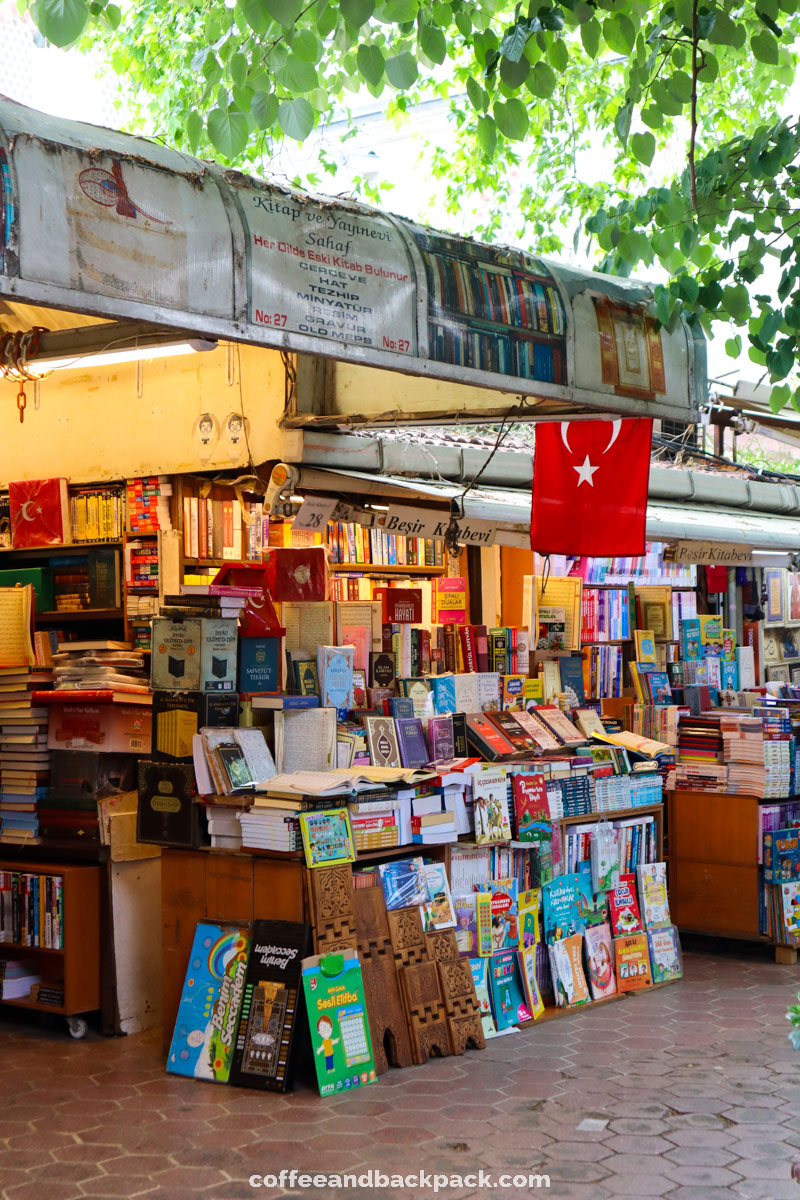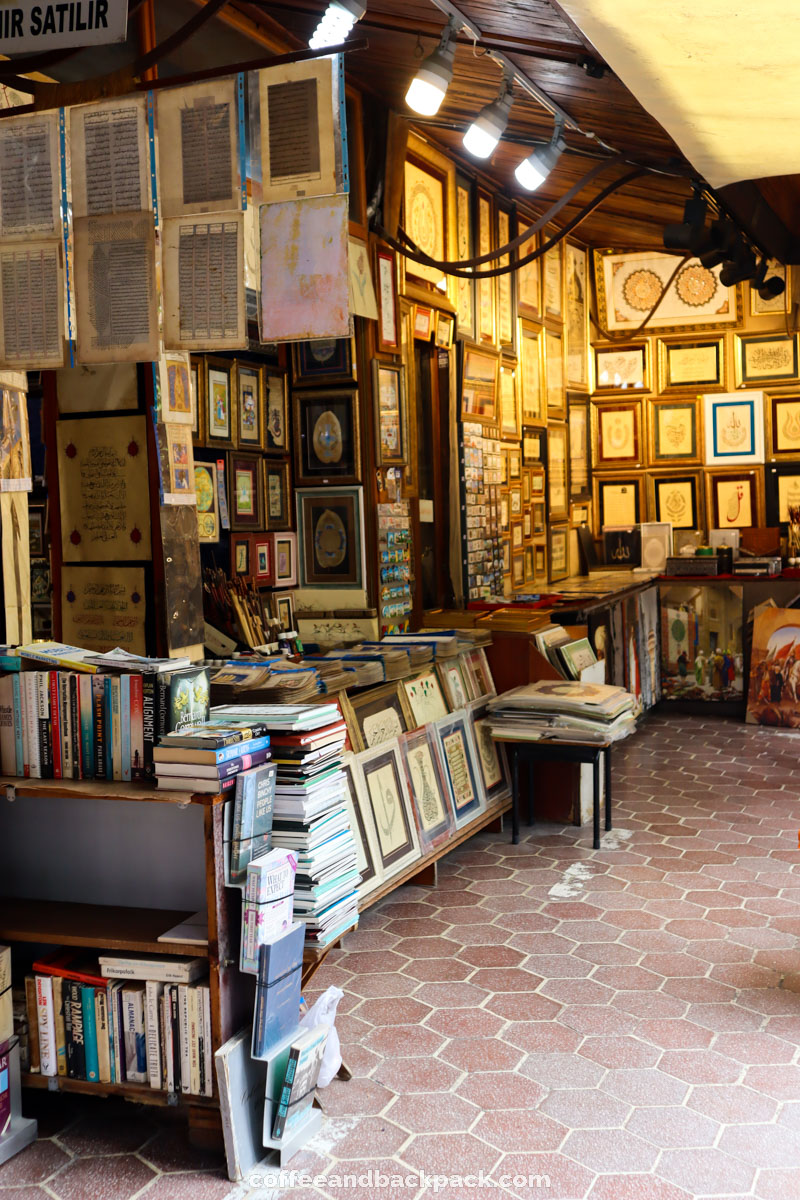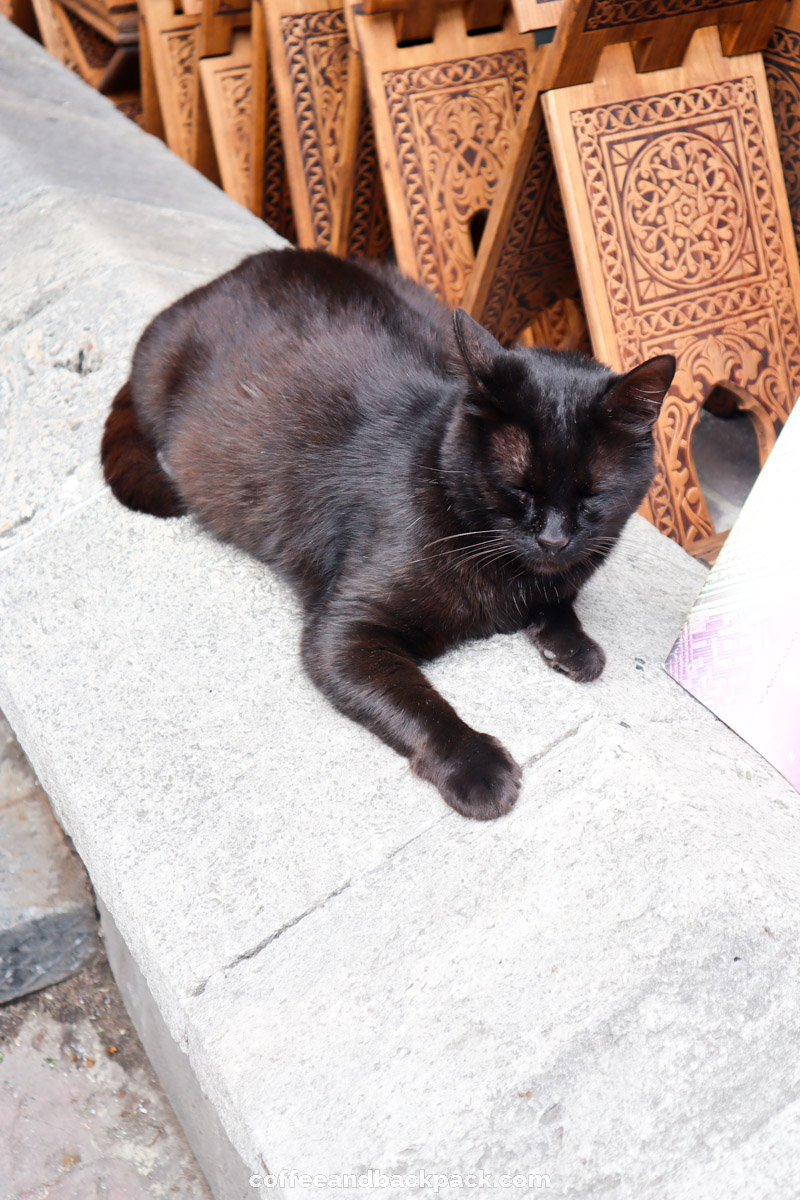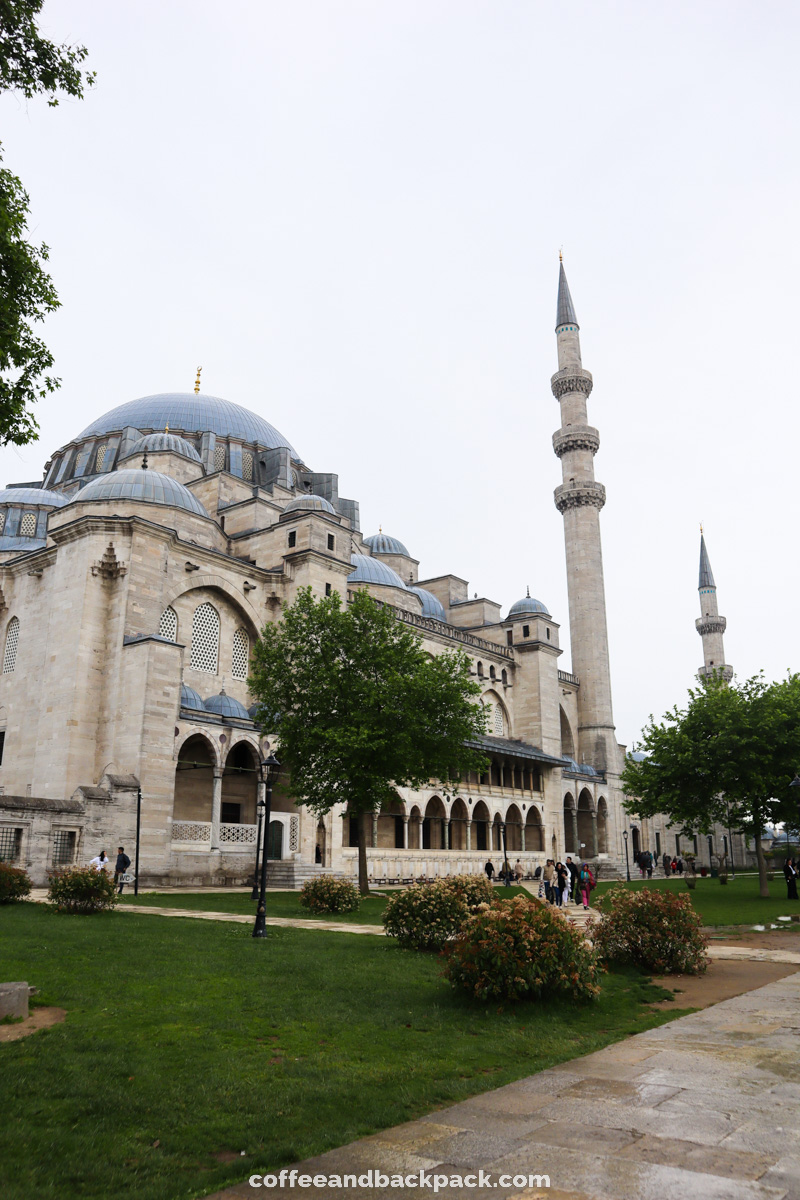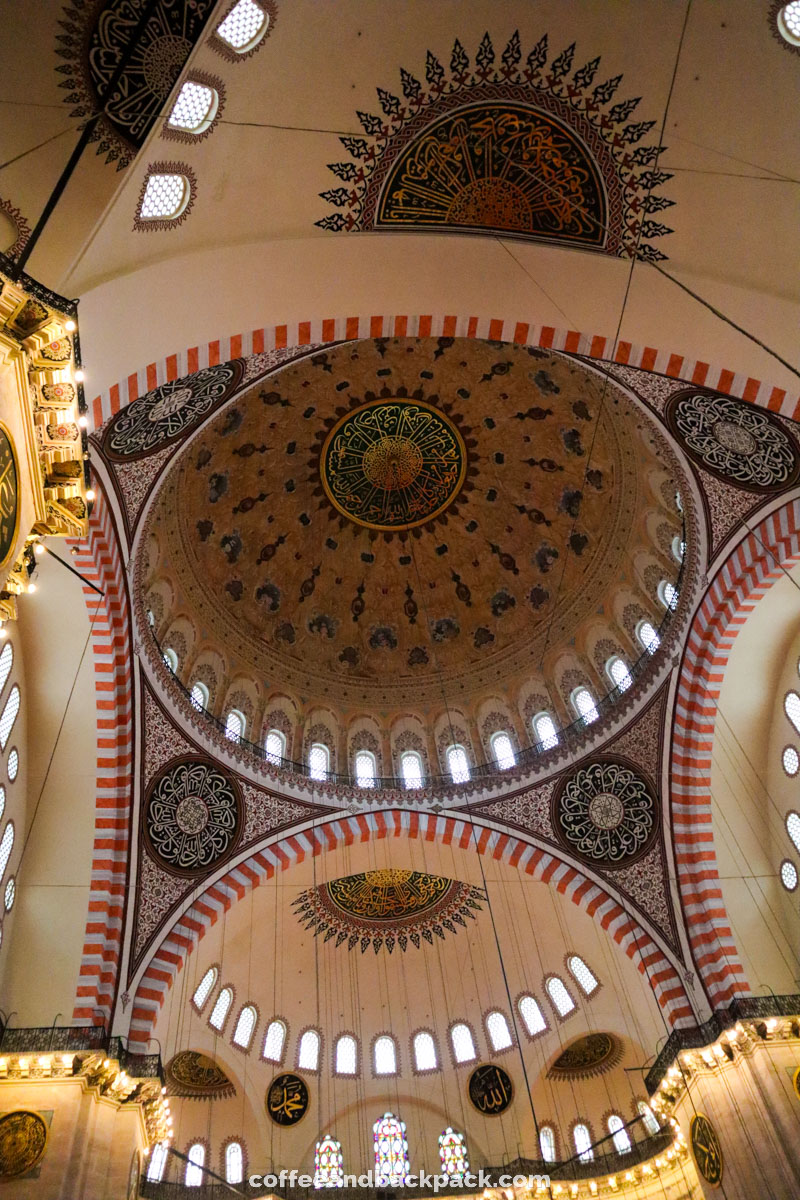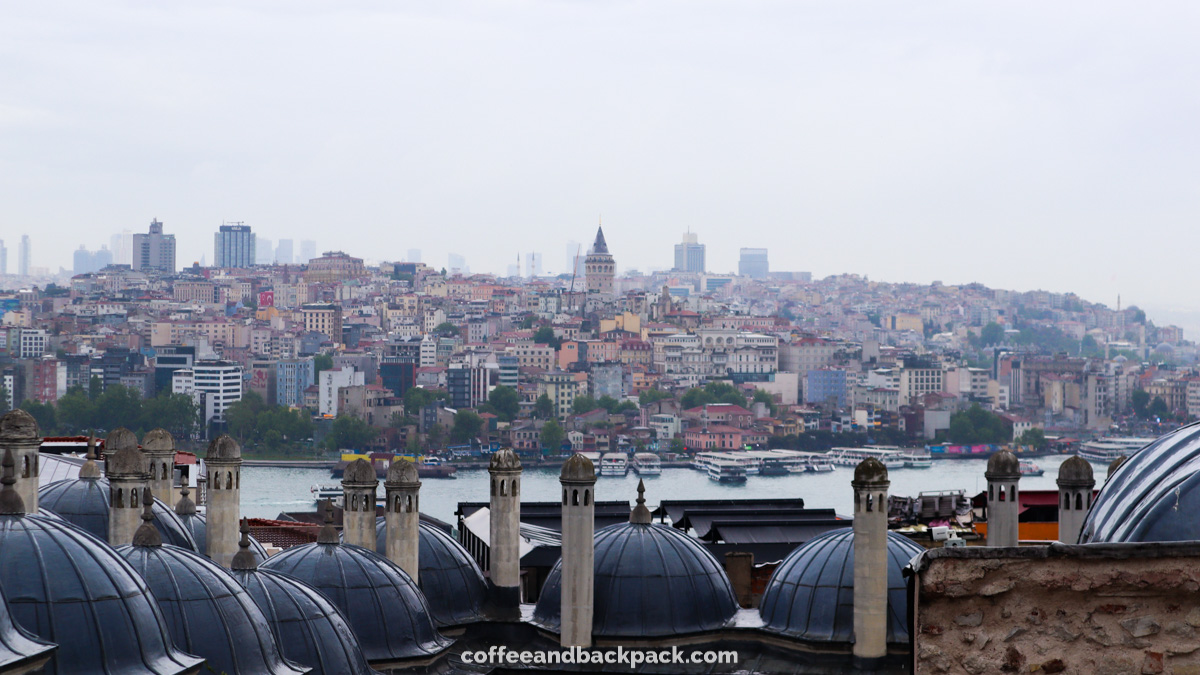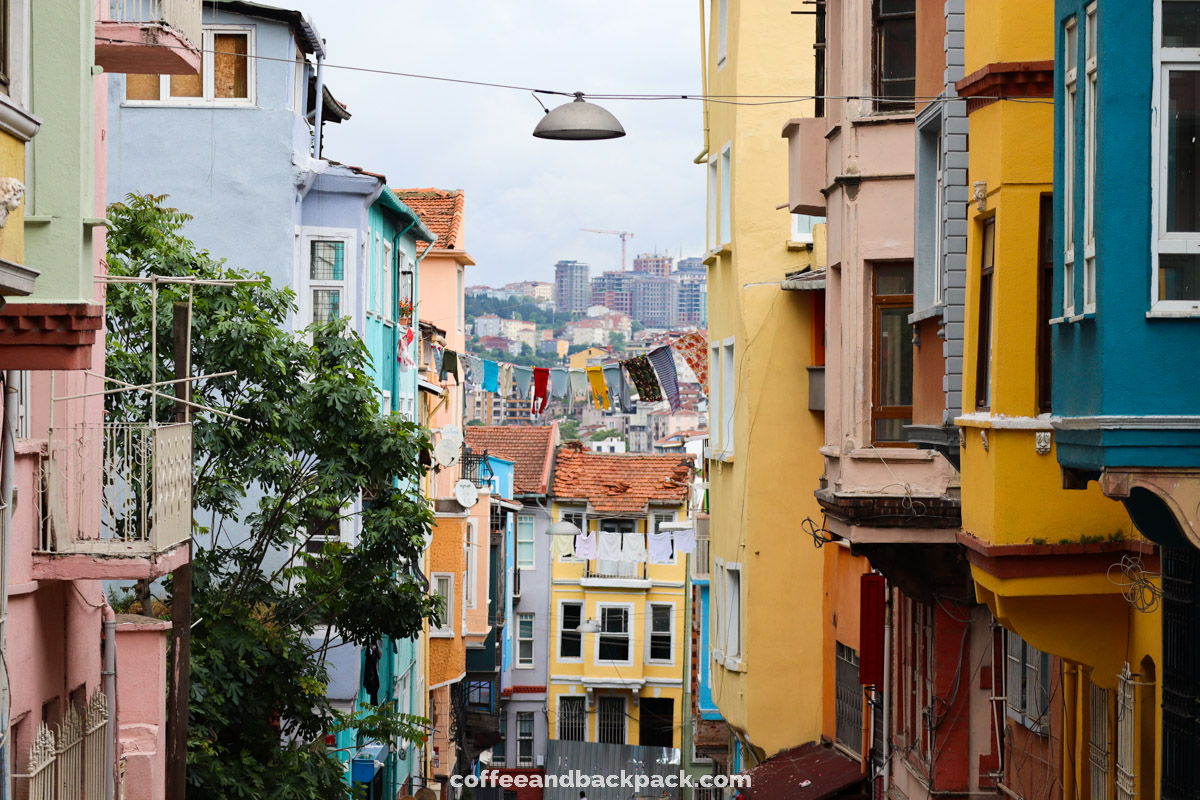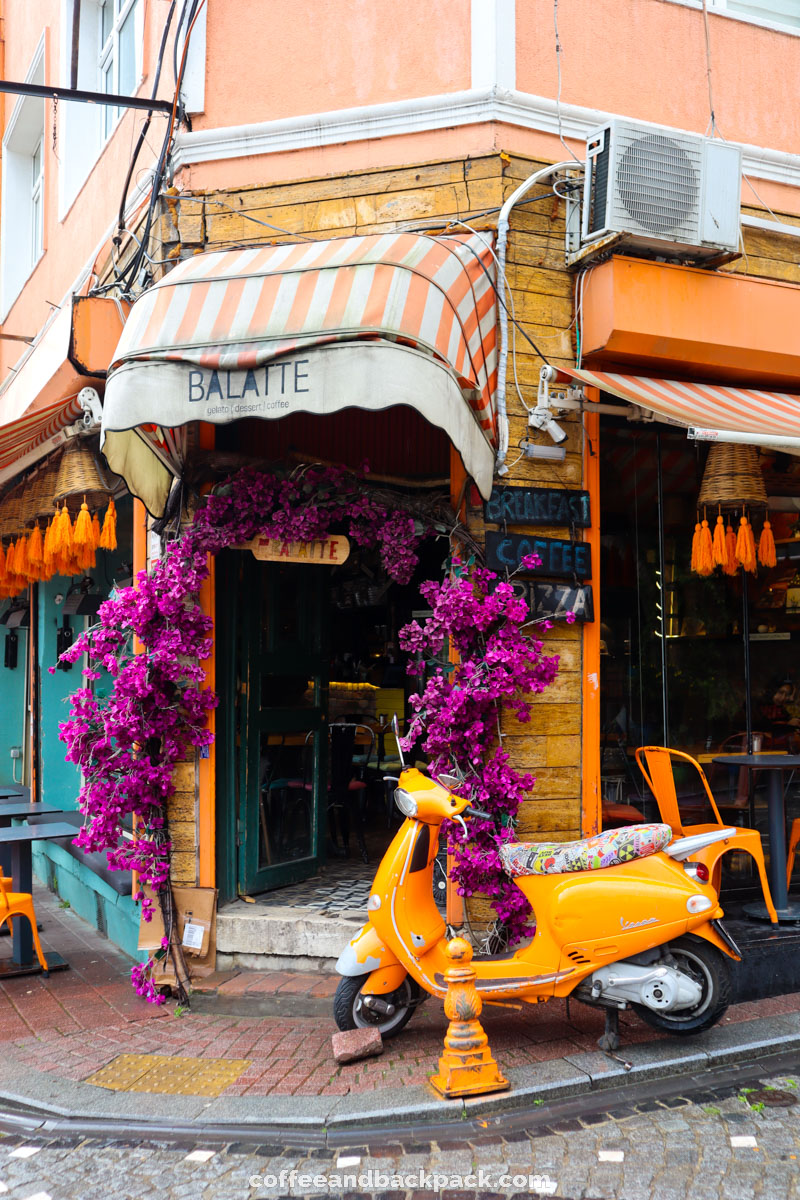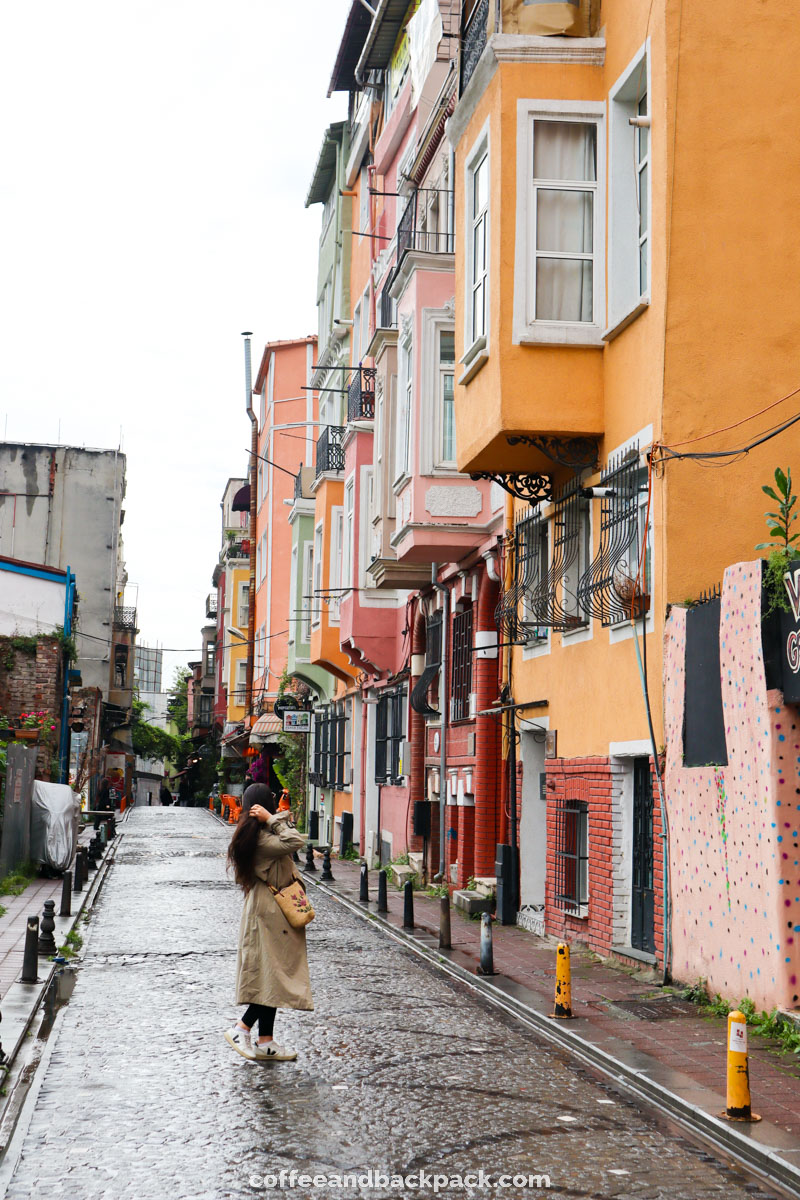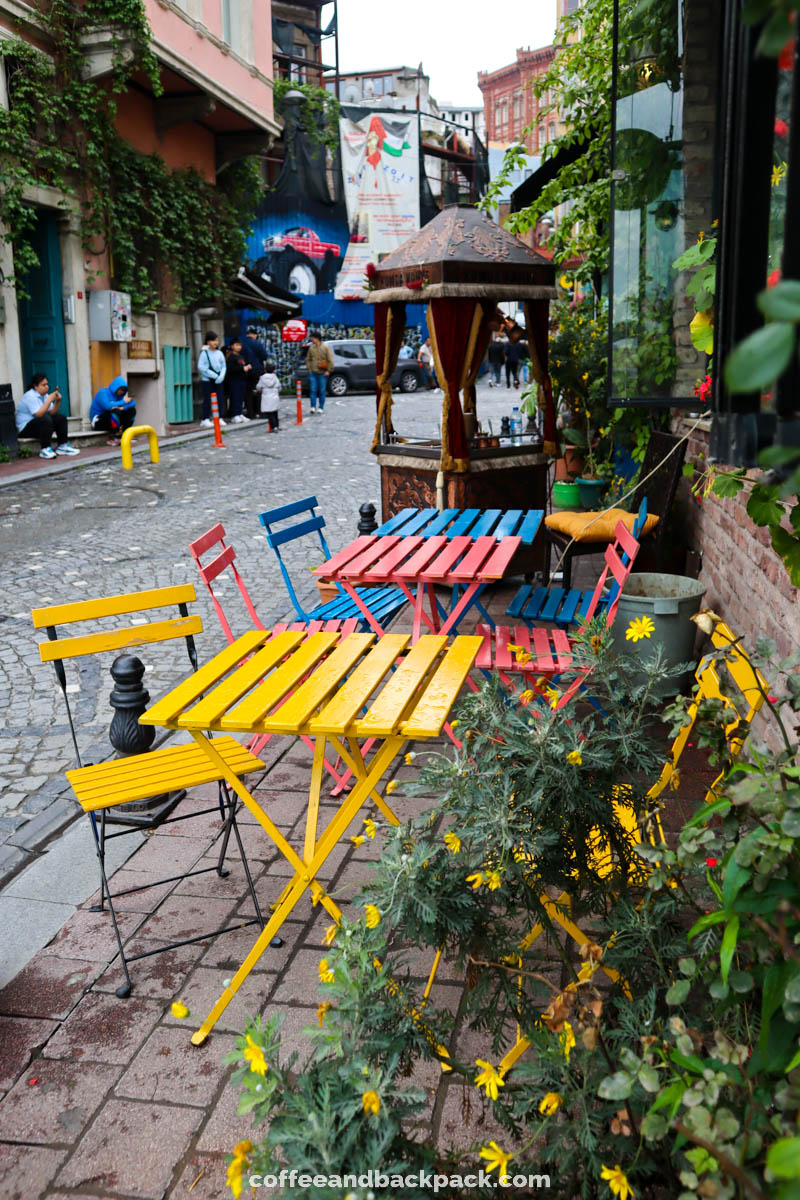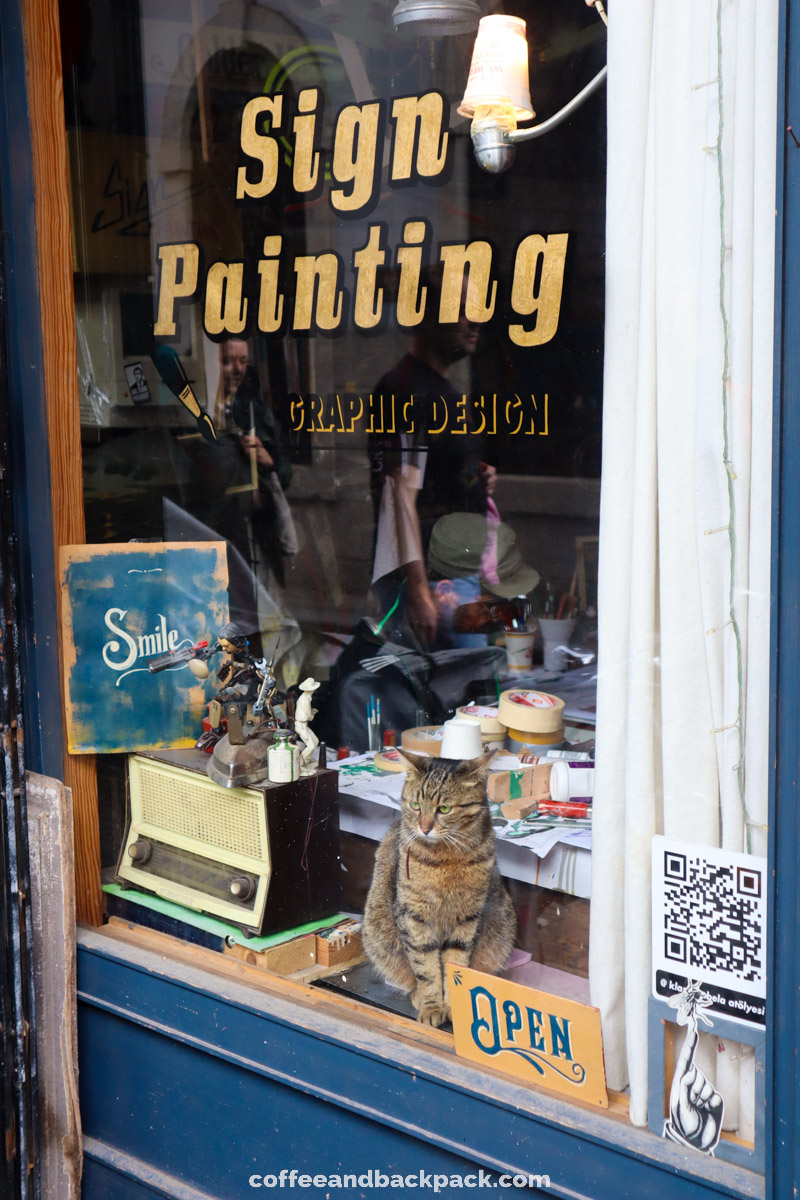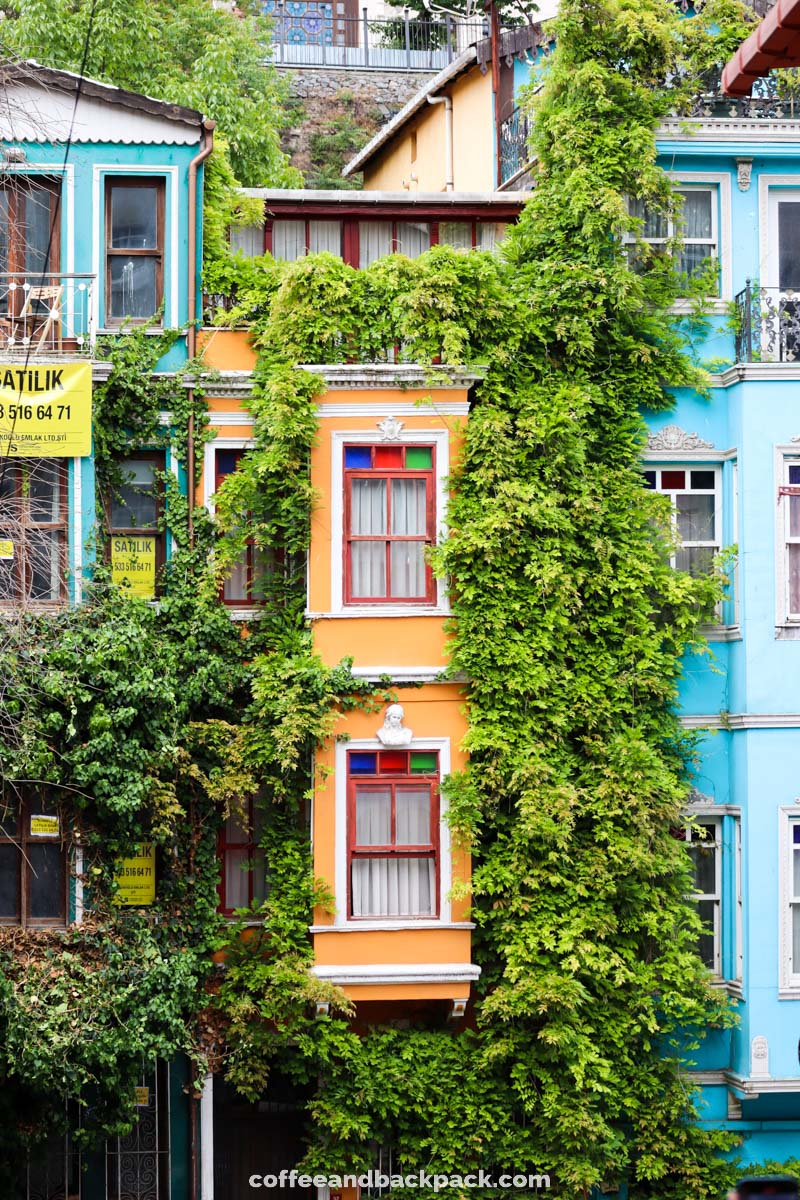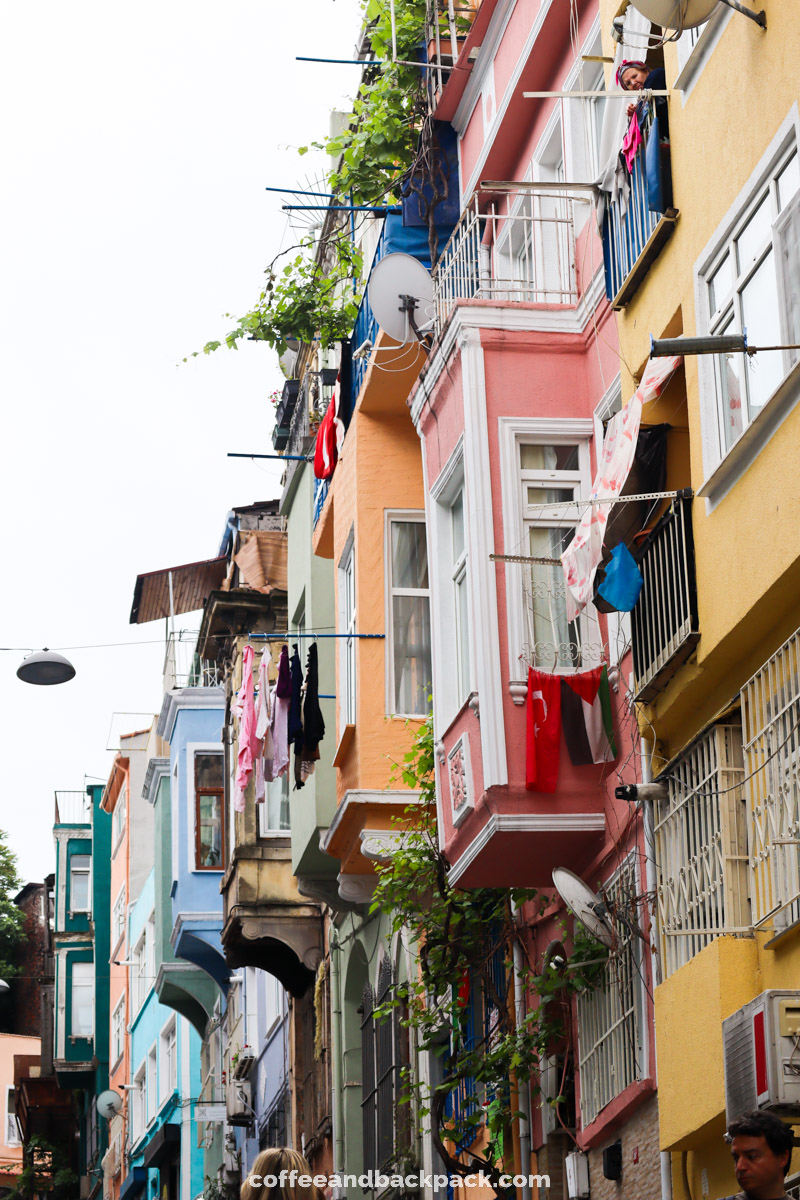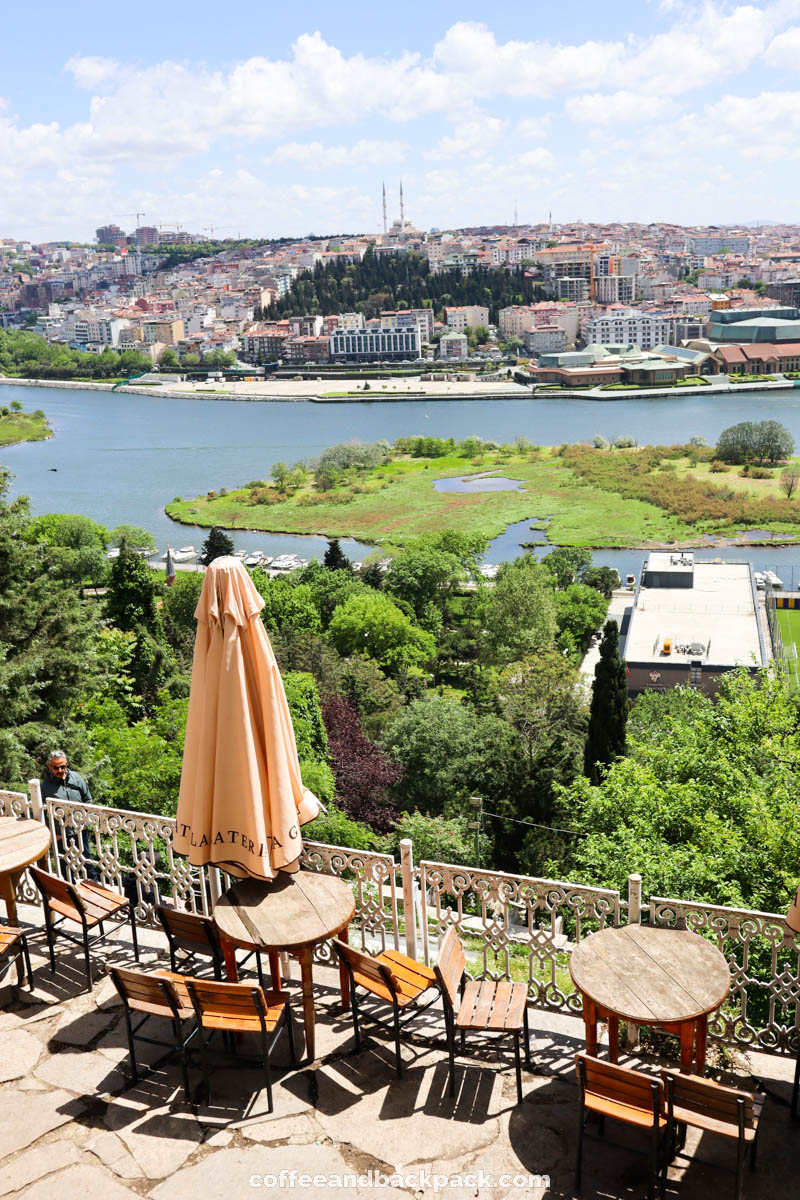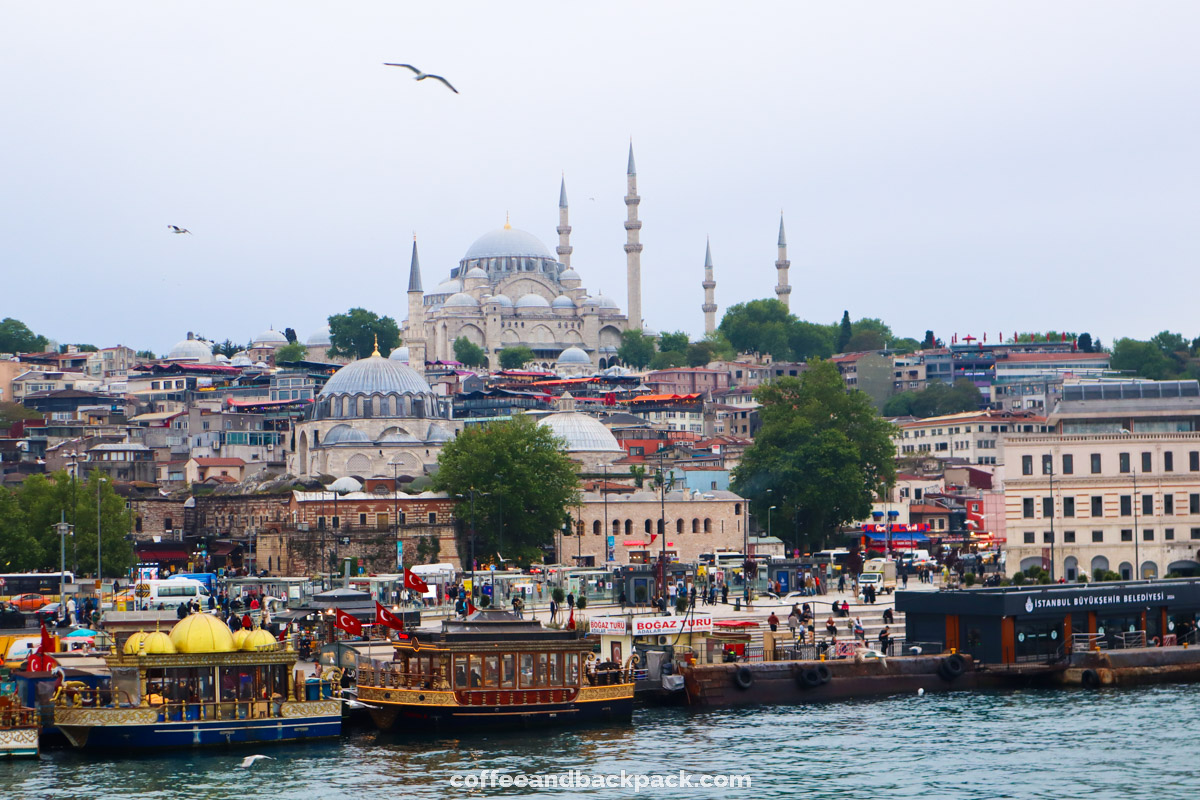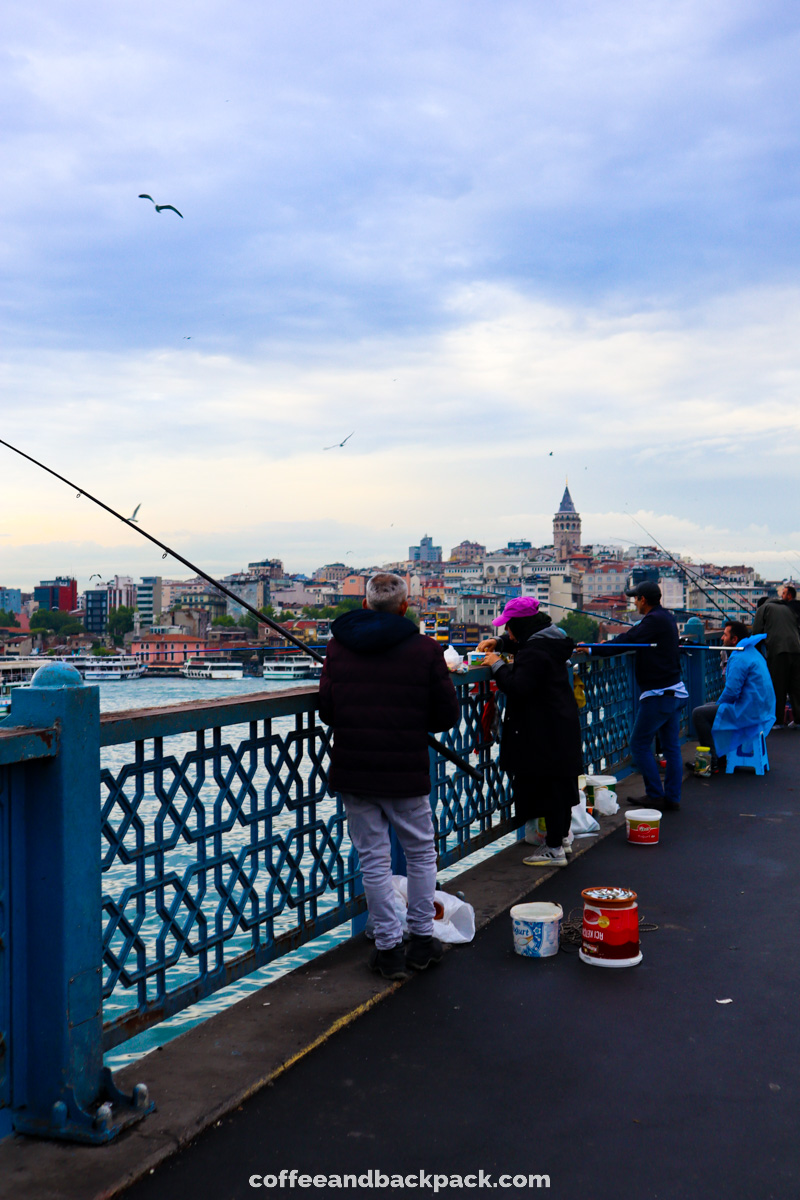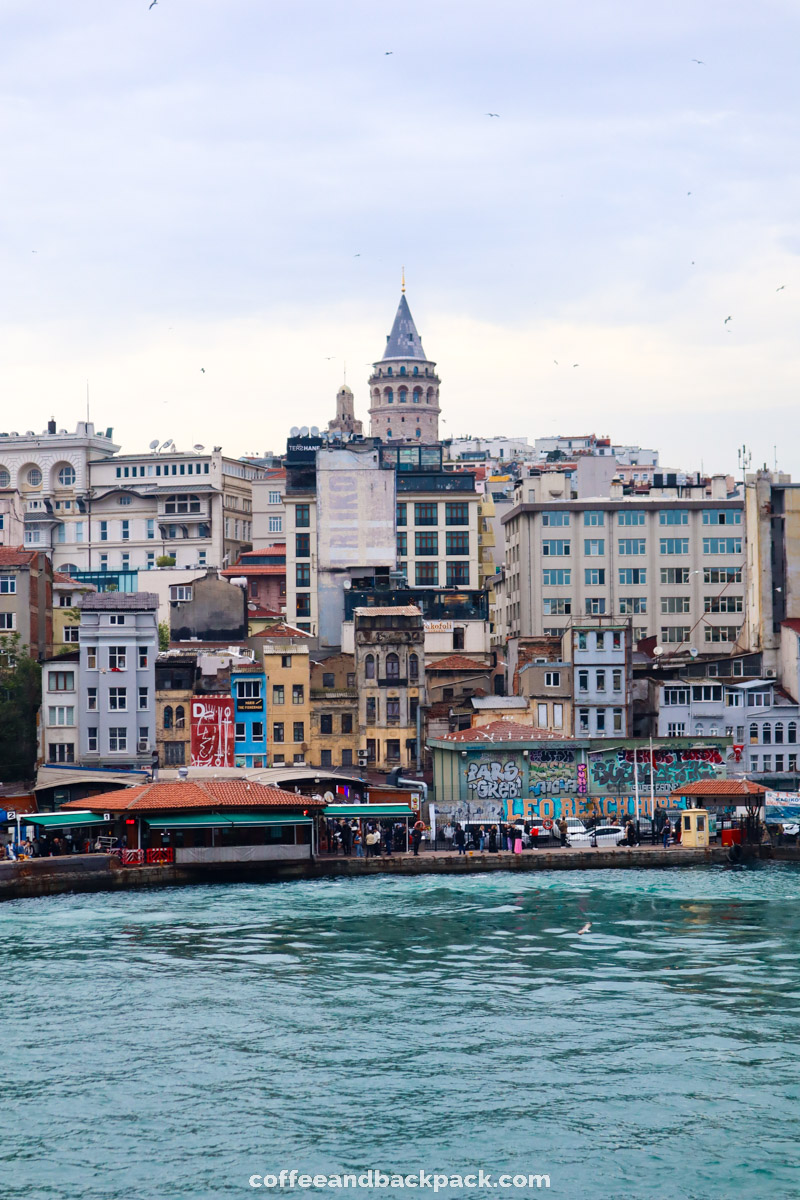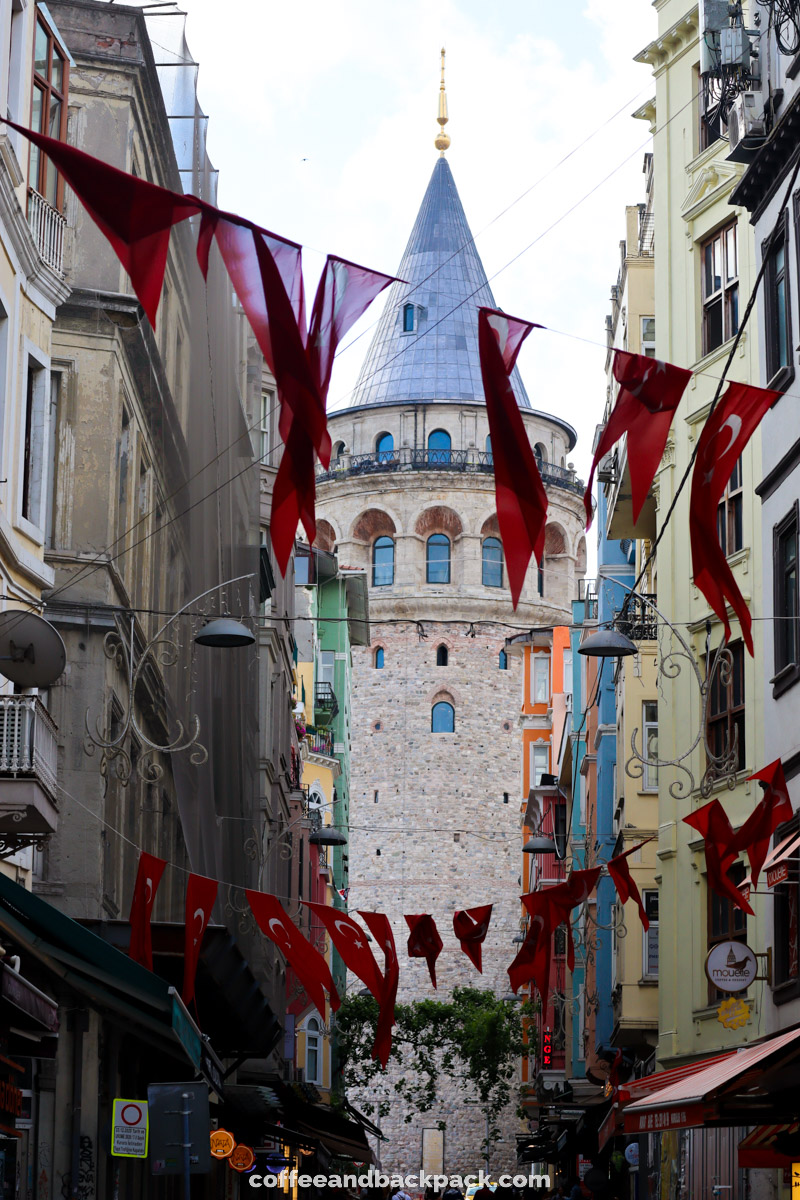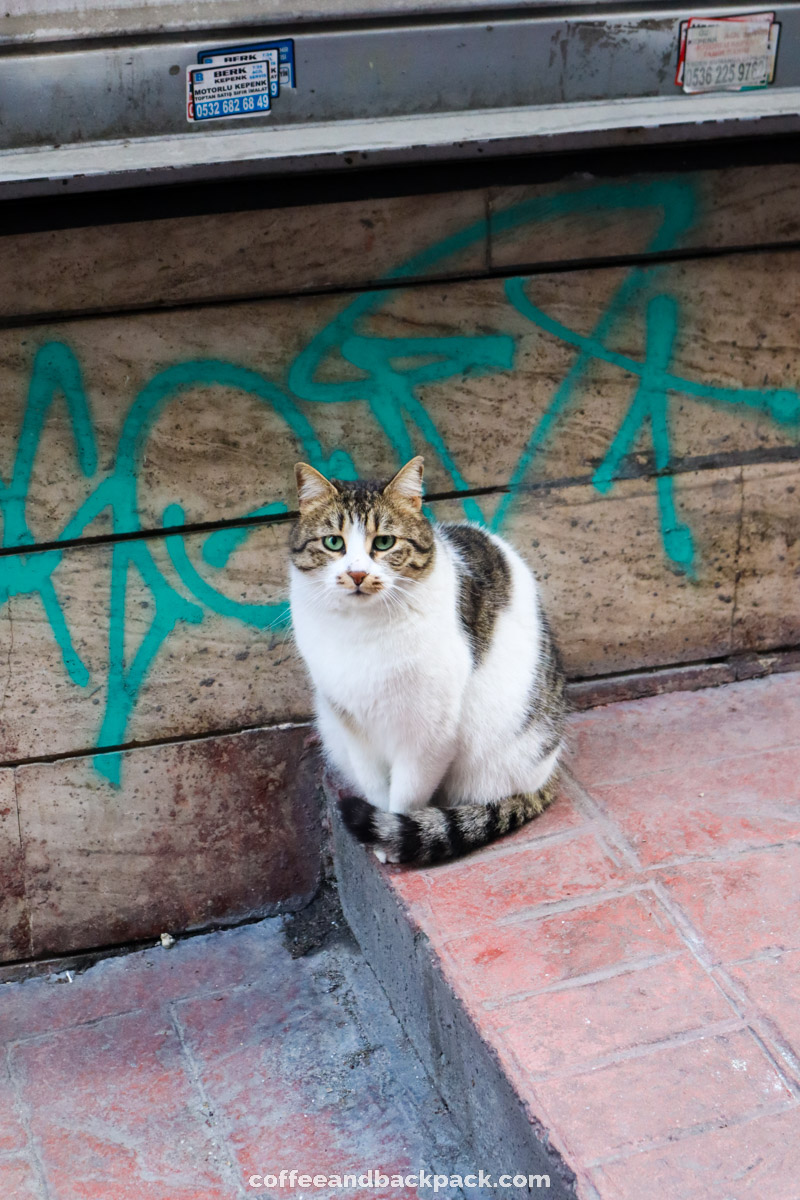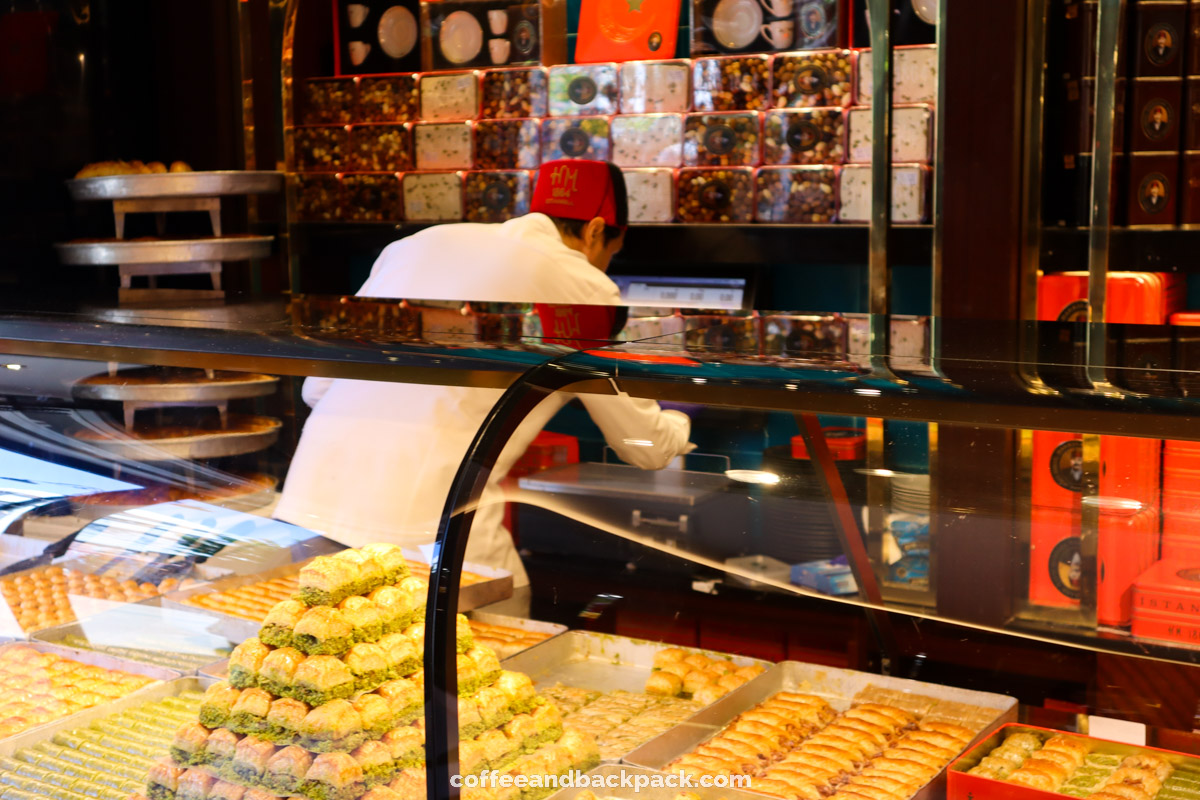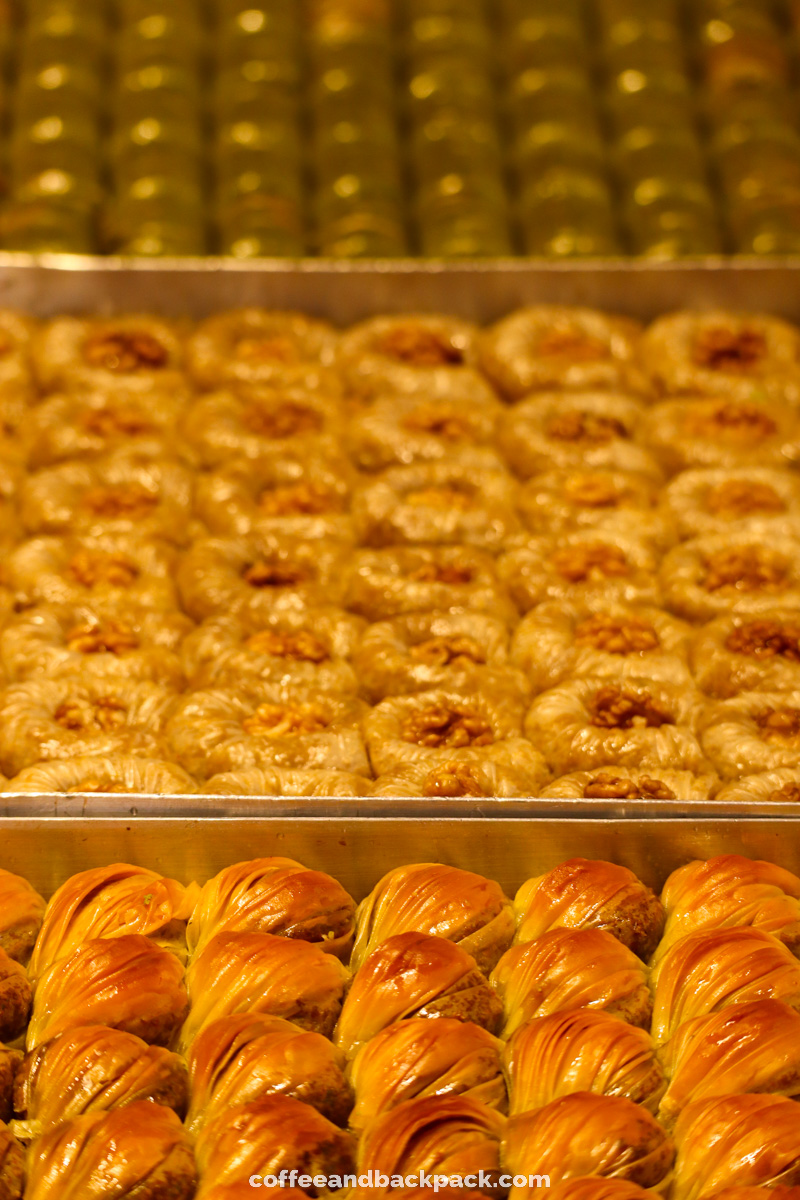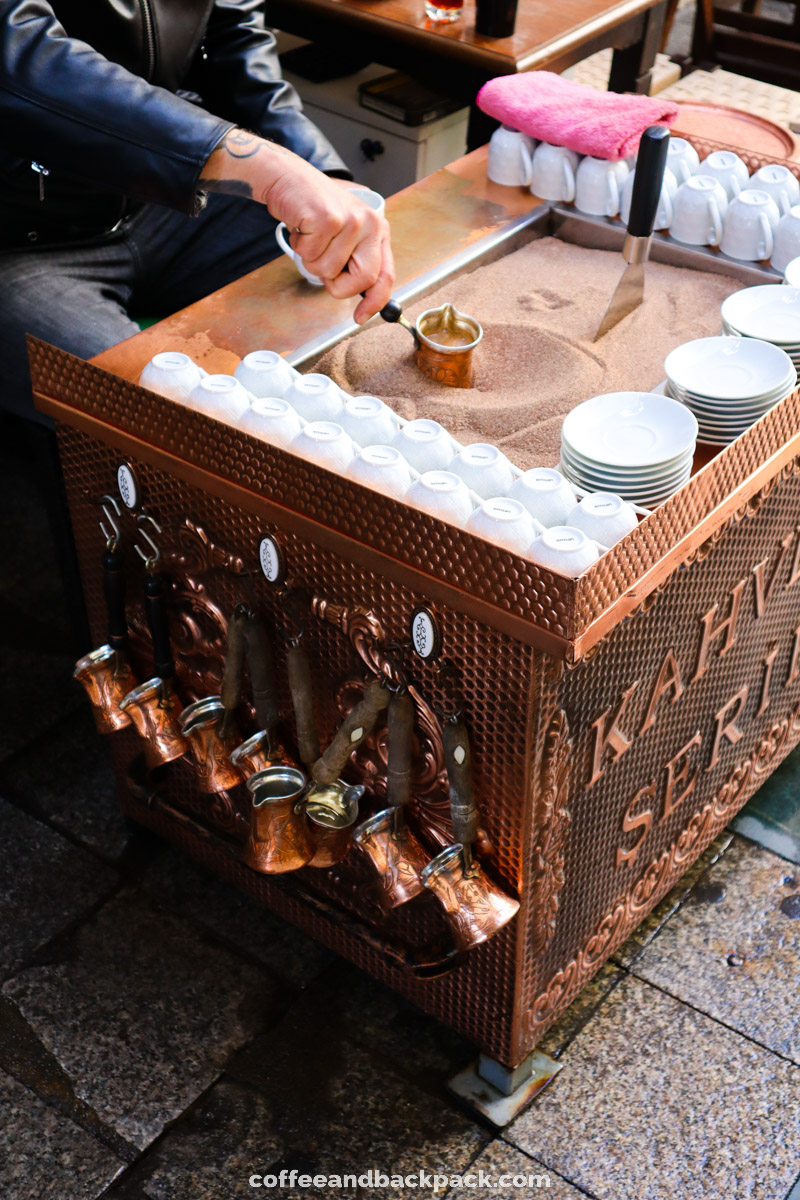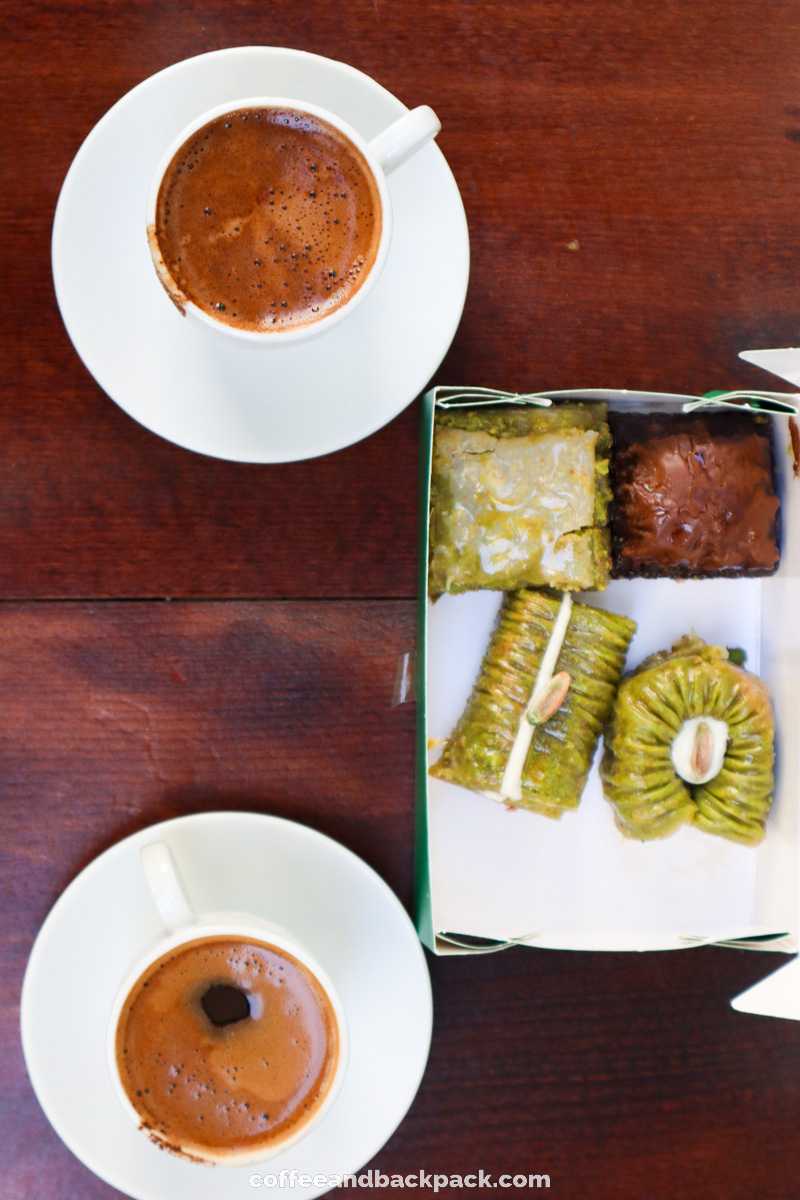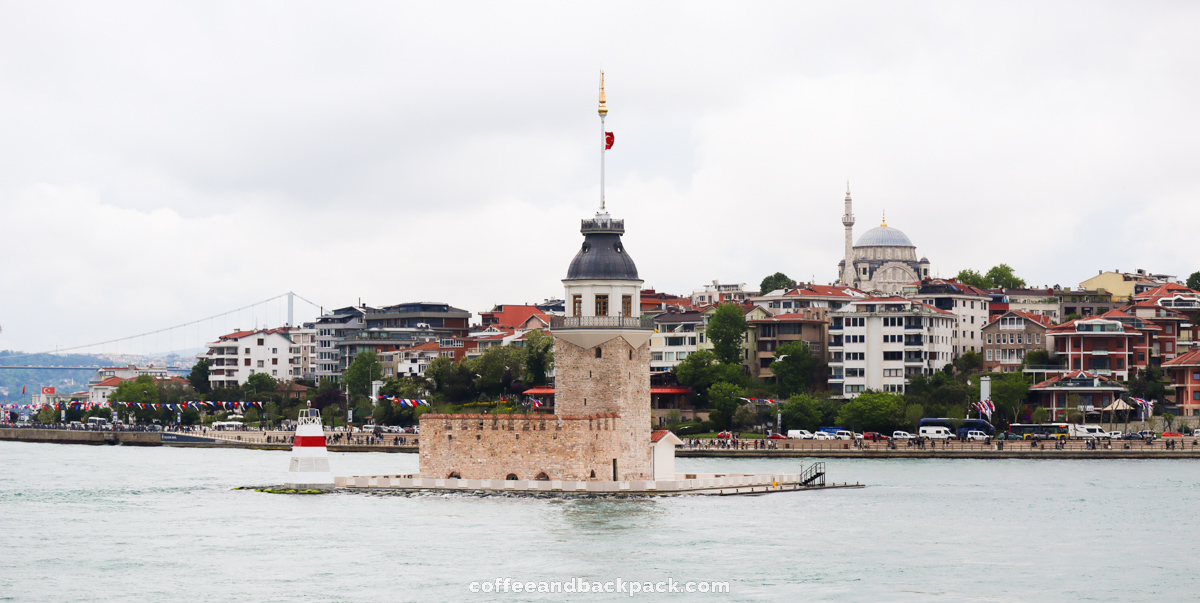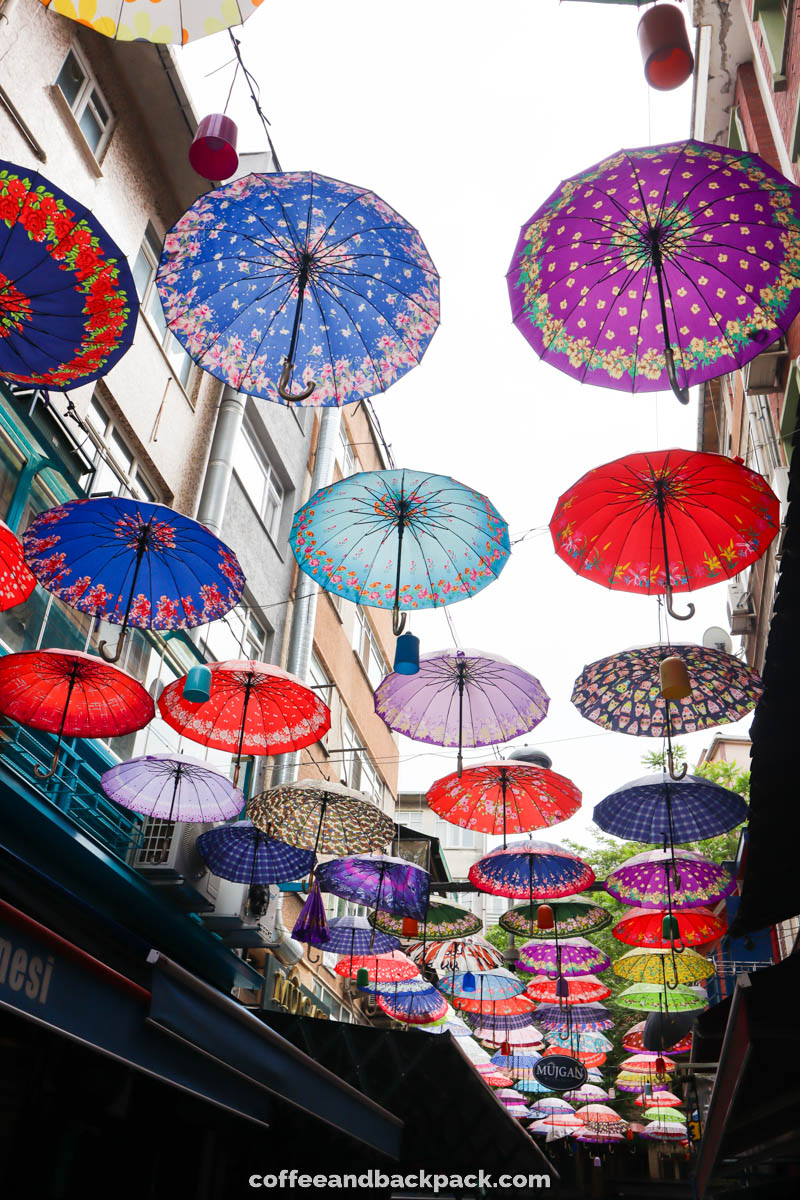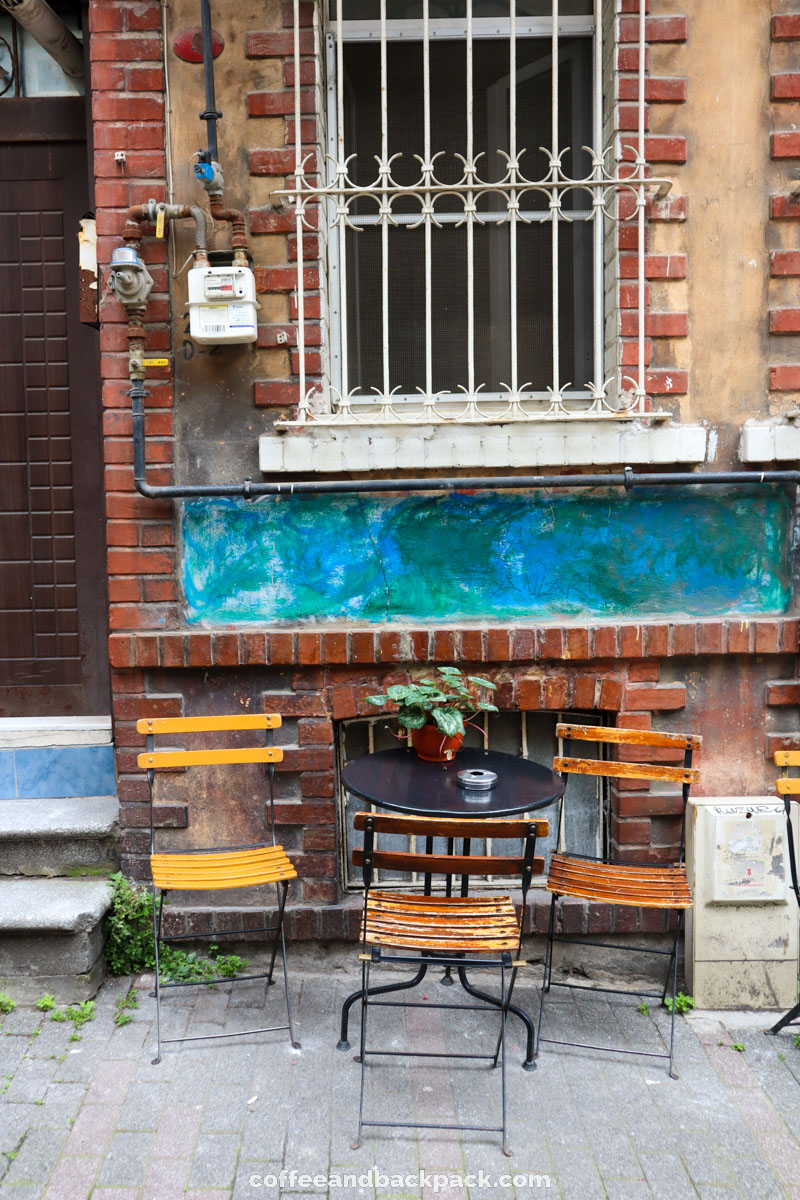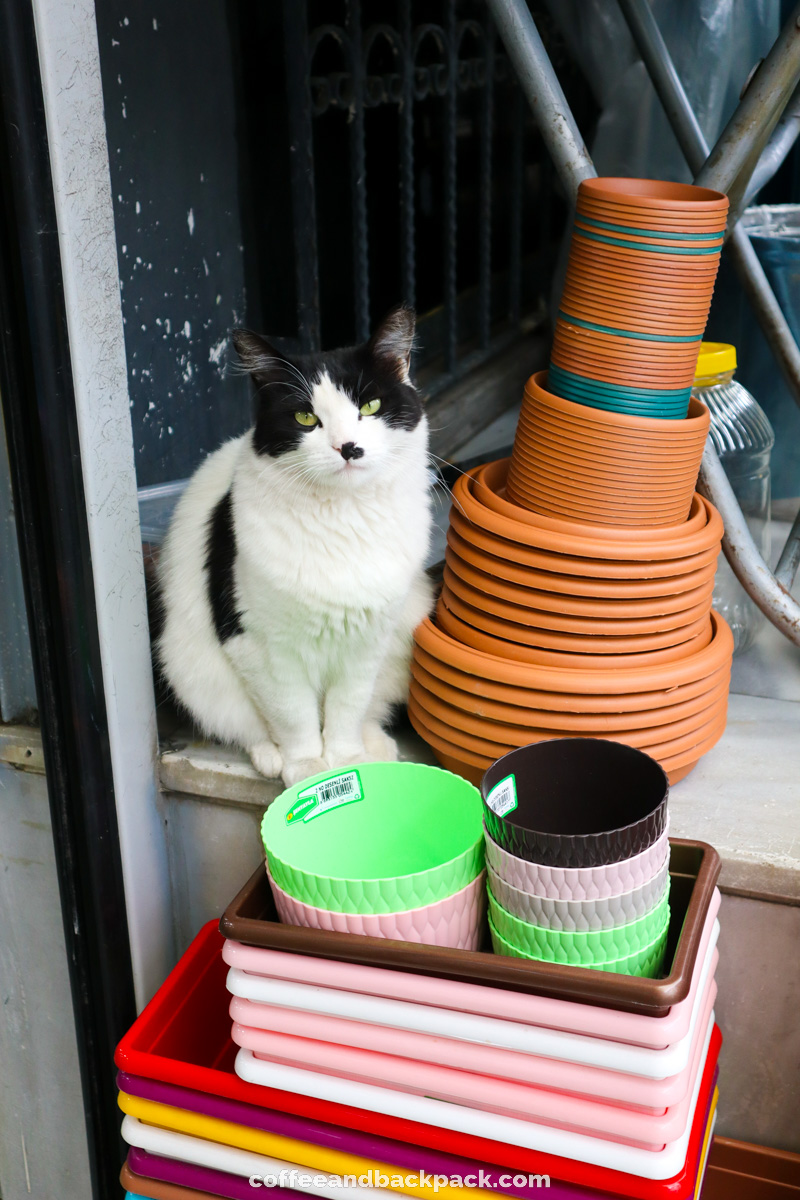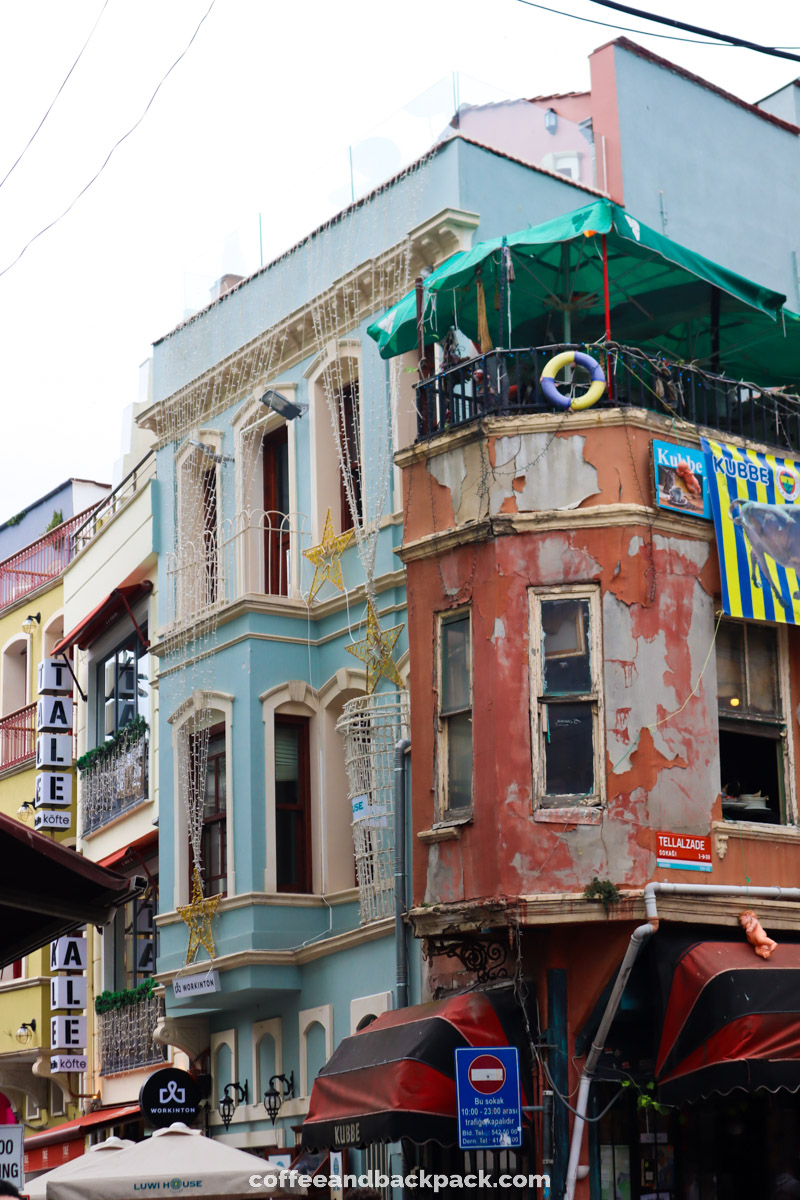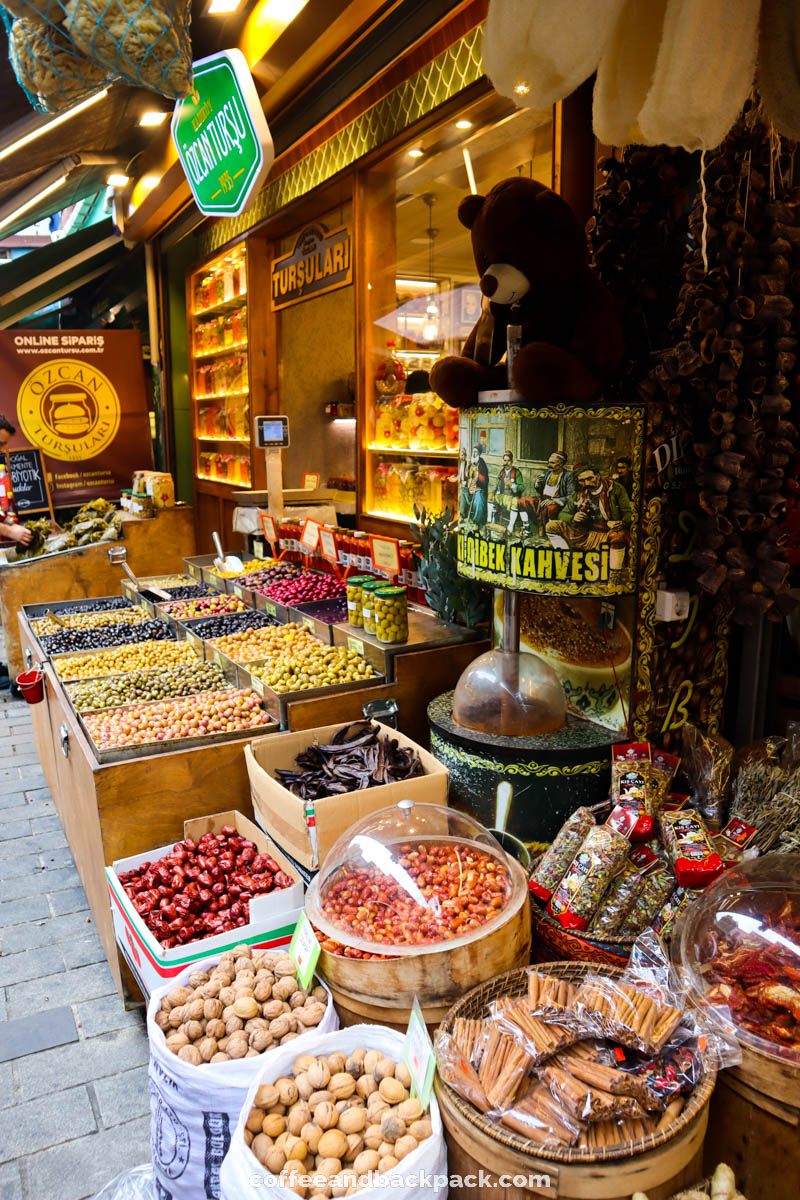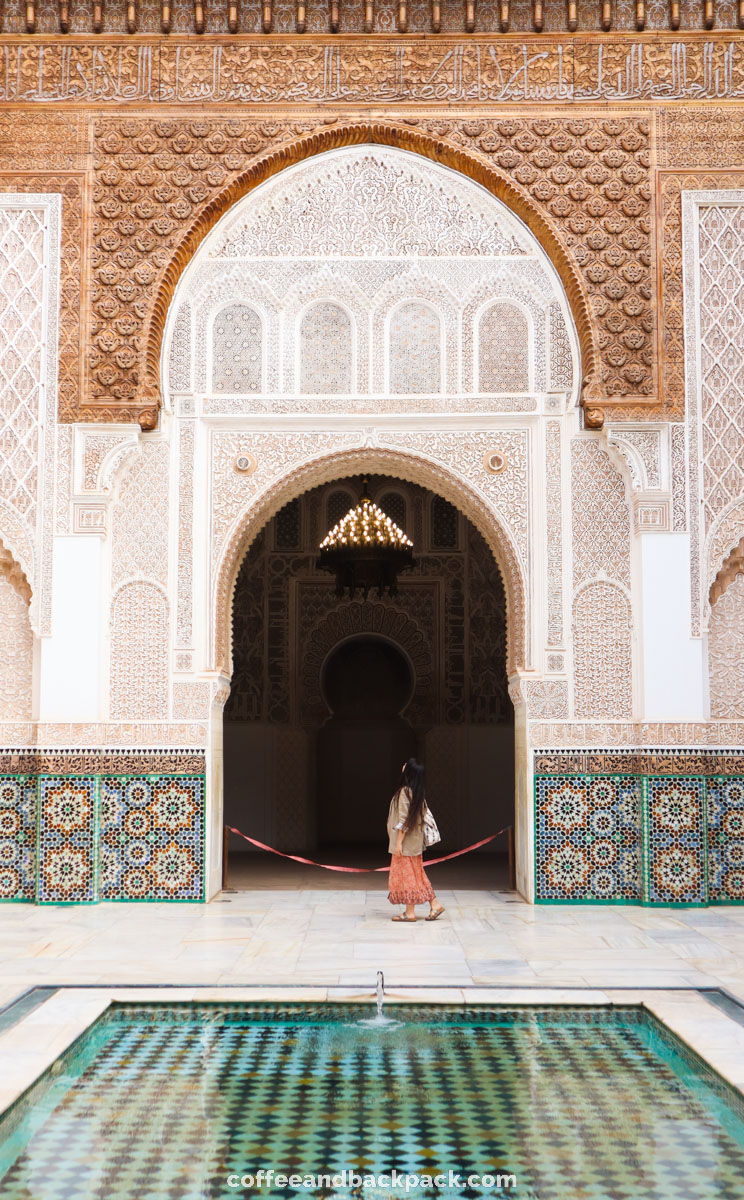Welcome to Istanbul, the city where East meets West. With its rich cultural heritage, ancient mosques, and iconic neighbourhoods, Istanbul is a truly unique and must-see destination.
It’s easy to feel overwhelmed by the countless sights to explore in this vibrant city of 16 million people. To help you navigate, we've created a carefully crafted 3-day itinerary that covers Istanbul’s must-see attractions, from the majestic Topkapı Palace and the iconic Blue Mosque to the lively alleys of the Grand Bazaar and the charming Balat neighbourhood. Along the way, you’ll find practical tips to maximise your experience and avoid the crowds, along with our handpicked recommendations for restaurants and cafés to fully immerse yourself in Turkish culture.
Get ready to be amazed by the beauty of Istanbul, to savour its legendary hospitality, and to experience an unforgettable journey.
Good to know before traveling to Istanbul
Arriving to Istanbul
Istanbul Airport is located 40 km from the city center, and traffic between these two points can be quite unpredictable. A taxi ride to central Istanbul takes about 40 minutes, but this time can easily double during peak hours, depending on the location of your accommodation, as the center has many narrow, one-way streets where traffic can be challenging. If you're taking public transportation, expect the journey to take at least 2 hours. We recommend booking a taxi through your hotel with a fixed rate if possible, or arranging your transfer from the airport with a taxi company in advance. The same applies for your return. When heading back to the airport from the city center, be sure to leave at least an hour earlier than planned to account for possible traffic delays.
Transport & Accommodation
Istanbul is a vast city, to say the least. It's inevitable that you'll need to use public transportation to reach the main attractions and neighbourhoods. We recommend purchasing an Istanbul Card (Istanbul Kart), a small red chip card that can be bought and recharged at kiosks located at tram stops. You can also get one from the Biletmatik machines at the airport. This card allows you to easily use the bus, tram, metro, and even the ferry to cross to the Asian side of the city. The card costs 130 lira (just under 4 euros). In addition to being convenient, the card offers discounted fares for public transport. You can find more information about the card and where to get one on
this website.
Regarding where to stay while traveling to Istanbul, we recommend choosing a hotel in the Sultanahmet neighbourhood, close to the two iconic mosques: Hagia Sophia and the Blue Mosque. While this area is lively and popular with tourists, it offers the advantage of being well-connected to public transportation, located near the main attractions, and surrounded by charming restaurants for your meals. This neighbourhood is also safe for tourists, but as with any major city, it's important to stay alert to the possibility of pickpockets.
Budget
Although accommodation and dining are very affordable in Istanbul, unfortunately, this is not the case for the city's main tourist attractions, which are incredibly expensive. For instance, entry to visit Hagia Sophia Mosque costs nearly 30 euros, as does the Basilica Cistern. Visiting Topkapi Palace with an audio guide will set you back around 40 euros. Luckily, some attractions are free, such as the Blue Mosque, the Grand Bazaar, and the Süleymaniye Mosque. So, if you're on a budget, you'll need to prioritize your visits.
The choice of historical sites to visit will also come down to how much time you have. Be prepared for long lines at tourist attractions, even if you arrive at opening time and have pre-booked your tickets. For example, when we visited Istanbul in May, there was still an hour-long wait to enter Hagia Sophia, even with pre-reserved tickets.
That’s why we’ve included in this itinerary at least one must-see site along with several free visits and local experiences that won't drain your travel budget!
Day 1 - Ancient Mosques and the Bazaars of Istanbul
This first day in Istanbul begins at Sultanahmet Park. This park is uniquely located between two of the city's legendary mosques: the Hagia Sophia Mosque and the Blue Mosque, both situated in the heart of ancient Constantinople.
It's an ideal vantage point to admire these two marvels, each with its own distinct history. Originally a Christian basilica built in the 4th century, Hagia Sophia was converted into a mosque in the 15th century after the Ottoman Empire conquered Constantinople. The Blue Mosque, also known as the Sultanahmet Mosque, was built in the 16th century and remains a place of worship today, unlike Hagia Sophia, which has since become a museum.
The Blue Mosque is also one of Istanbul's most popular tourist attractions. Its interior is adorned with blue ceramics, which give the mosque its current name.
We recommend visiting early to enjoy the site without the crowds of tourists and to capture some beautiful photos.
Right next to the park is the former Hippodrome of Constantinople, a remnant of the Byzantine Empire. Although it was destroyed in the 13th century, you can still imagine its significance by observing the hairpin-shaped square and the presence of two towering obelisks.
We suggest taking advantage of your first morning in Istanbul to visit one of the many historical sites located in this area, such as Hagia Sophia, Topkapı Palace, or the Basilica Cistern. During our visit, Hagia Sophia was undergoing significant restoration work, with most of the mosaics covered by tarps and scaffolding. Therefore, we chose to visit Topkapı Palace instead, knowing we could later visit several mosques for free.
Topkapı Palace, the former residence of the Ottoman sultans, spans 70 hectares and is surrounded by a 5-kilometer-long wall. Prepare to be amazed by the grandeur and splendor of this place during a visit that can easily take a good two hours. The entrance fee for the palace is 1500 Turkish lira, which is just over 42 euros, including an audio guide. Unfortunately, you will need to factor in waiting time to collect your audio guide on-site before starting the visit.
Tip
Make sure to bring an identification document with you, as it will be required as a deposit for the use of the audio guide.
The palace is vast, with its countless courtyards, pavilions, and rooms. It is advisable to select the areas you wish to see ahead of your visit if you do not want to spend the entire day there.
We recommend not to miss the visit to the harem, the Divan Room where the council of ministers met, the imperial treasury that houses a collection of weapons and armor, and of course, the imperial hall where you can admire the Sultan's throne.
After visiting the palace, continue on to the Blue Mosque, known as Sultanahmet Camii in Turkish. Entry to this mosque is free, and access is from the former Hippodrome of Constantinople. This mosque is notable for having six minarets, which sparked controversy at the time of its construction, as only Mecca also had six. A seventh minaret was later added to Mecca to differentiate it. We were impressed by the interior of this mosque, featuring a dome that rises 43 meters high and is adorned with over 20,000 blue tiles.
Tip
As you are entering a mosque, it is essential to respect the religious customs in place, regardless of your faith. Everyone must remove their shoes, and women are required to cover their heads and shoulders. If you forgot to bring a shawl or scarf, mosques in Istanbul provide them at the entrance for free.
The mosque is closed during prayer times and every Friday morning.
Our itinerary continues just an 8-minute walk away with a visit to the Church of Saints Sergius and Bacchus, also known as the Little Hagia Sophia. This former Greek Orthodox church shares a similar history with Hagia Sophia, as it was converted into a mosque upon the arrival of Ottoman armies. It is a Byzantine structure that resembles Hagia Sophia’s architecture in a miniature version. Entry is free, and its interior, adorned with bluish tones, evokes that of the Blue Mosque, though on a more modest scale.
Tip
Before continuing our day with a visit to the city’s bazaars, we have two options to suggest for a lunch break featuring Turkish specialties.
The
Kybele Restaurant, located in the Sultanahmet district just a 5-minute walk from the Blue Mosque, offers a wide selection of traditional Turkish dishes in a cozy setting. The decor, adorned with colorful vases and lamps, is sure to catch your eye. The restaurant also boasts a lovely patio.
Alternatively, for a breathtaking view of the city and to get closer to the Grand Bazaar of Istanbul—our next stop on this itinerary—head to
Mayyas Café Restaurant. Access it via a narrow staircase from Fetva Street. Settle onto the rooftop terrace to enjoy the view and a meal made of one of the many Turkish specialties, such as kebab, hummus, pide (an oval-shaped Turkish pizza), or a mezze platter, which consists of various small dishes to share with pita bread.
Our next stop is the Grand Bazaar of Istanbul. Founded in the 15th century, it is one of the largest and oldest covered markets in the world. It spans 60 streets and features over 4,000 shops open every day from 8:30 AM to 7:00 PM, except on Sundays. You will find everything here: clothing, ceramics, handcrafted carpets, gold jewelry, spices, and much more. It is a must-visit destination for shopping enthusiasts and those looking to immerse themselves in Turkish culture. If you find an item that interests you, haggling with the merchant is not only possible but is also a tradition.
If shopping isn’t your thing, you can also sit at one of the bazaar’s cafés to enjoy a cup of Turkish coffee or tea while observing the hustle and bustle of the place.
Don’t miss visiting Zincirli Han, a hidden courtyard in the heart of the Grand Bazaar that offers a small oasis away from the hustle and bustle. You can easily find this courtyard as it is marked by signs within the Grand Bazaar.
Continue your visit with another bazaar, our favorite one: the Book Bazaar. It is only a few minutes away from the Grand Bazaar and right next to the Beyazit Mosque, which is free to visit. You can explore the mosque either before or after visiting the Book Bazaar.
In this charming marketplace, you will find maps, notebooks, and a wide selection of second-hand books in various languages. You might also encounter numerous cats taking their fifth nap of the day on stacks of books. After spending some time in Istanbul, you’ll quickly realize that cats are an integral part of daily life here. They roam freely wherever they please and often make themselves comfortable on the rugs and chairs of hotels and restaurants for a cozy snooze.
This first day in Istanbul concludes with a visit to the Süleymaniye Mosque. More than just a place of worship, this mosque used to be a veritable city in itself. The complex includes, among other things, a hammam, a Quranic school, a cemetery, and even a hospital. Perched on the heights of Istanbul, the mosque offers stunning views of the city.
Built for Suleiman the Magnificent, the sultan who reigned the longest in the Ottoman dynasty, it embodies the grandeur of the Ottoman Empire through its architecture. Visitors can admire an inner courtyard surrounded by marble columns and 28 domes, a central dome soaring to 47 meters high with a giant circular chandelier, as well as Iznik tiles adorned with intricate red and blue patterns.
The mosque is open daily from 8:30 AM to 4:45 PM, and admission is free.
For dinner, we recommend the
Old Hippodrome Terrace restaurant, located in the Sultanahmet district. This traditional Turkish restaurant is popular with both locals and tourists, offering a wide selection of typical meat dishes as well as vegetarian options featuring vegetables and cheese. With its Mediterranean influences, vegetarians will be delighted by Turkish cuisine and the offerings from restaurants and street food stalls throughout Istanbul. It’s very easy to find a vegetarian dish, and there is a wide variety to choose from. The portions are quite generous, so be cautious when ordering your meals. For example, we ordered a mezze platter to share as a starter for two, but it was so plentiful that it would have been more suitable for a table of four or even six people.
Another option is
Dubb Ethnic Restaurant, which is also in the area. We loved their lovely terrace, where cats come to nap, and the extensive menu they offer.
Day 2 - Discovering Balat, Pierre Loti Café, and the Galata Bridge
After a first day in the historic center of Istanbul, we suggest stepping off the beaten path for this second day. Start by exploring the colourful neighbourhood of Balat, then continue with a visit to the must-see Pierre Loti Café, and finish with a sunset over the Galata Bridge.
The Balat neighborhood offers an authentic glimpse into Turkish daily life, away from the usual tourist routes. Located on the shores of the Golden Horn, Balat is known for its cobbled streets, colorful facades, and numerous cafés. This historic district, once the Jewish center of the city, retains a remarkable cultural richness with its synagogues, churches, and mosques, reflecting the religious diversity of Istanbul.
It is very easy to get there by taxi or tram from Sultanahmet Square. Once a hidden gem of the city, it is now highly visited for its many "Instagram spots." Therefore, it is recommended to go early or late in the day to fully enjoy it. We suggest visiting in the morning to combine your trip with brunch at one of the many cafés in the area, such as
Balatkapı Café.
Points of interest in the neighbourhood include St. George’s Church, the Orthodox school with its imposing architecture and red stone façade, the colorful stairs of Balat, and the colourful houses of Balat that can be admired while descending Usturumca Street.
Tip
The streets of Balat are cobbled and hilly, which is something to consider if you are traveling with children or a stroller.
As you stroll through Balat, you will discover a vibrant atmosphere that blends tradition and modernity. The local markets and antique shops invite leisurely exploration, while the cafés and restaurants provide a pleasant break with authentic Turkish specialties. Be sure not to miss Feriköy Street, a lively spot where locals gather to buy fresh and local produce.
Tip
To learn more about the neighborhood and ensure you don’t miss any of its highlights, you can join a walking tour in the Balat-Fener area. We took one during our trip to Istanbul and highly recommend it!
Here is the walking tour we booked, which lasts about 3 hours.
After Balat, take the bus or a taxi to the Eyüp neighborhood and Pierre Loti Hill. Located a bit further along the Golden Horn, this area is removed from the hustle and bustle of the shopping streets and tourist attractions in the center. Here, you’ll discover a new glimpse of local life and places favoured by Istanbul residents. One such place is the Pierre Loti Café, situated in the Eyüp cemetery, not far from the mosque of the same name. Rest assured, the café is not nestled among the gravestones! You will walk along the cemetery to reach the café and its large terrace, where you’ll enjoy one of the most beautiful views of the Golden Horn and the western part of Istanbul. This café is named after the French writer Pierre Loti, who was a lover of the city and a regular visitor of this area.
We recommend having lunch there to fully enjoy the setting and the view. It’s not possible to book a table in advance, however the café’s terrace is large enough, and you shouldn’t have to wait too long for a table to become available. Be sure to visit the observation platform located below the café terrace. You can also take the funicular to descend the hill and get closer to the bus stops for your return journey to the center of Istanbul.
The café is open every day from 8:30 AM to midnight.
This day concludes at one of the city's iconic bridges, the Galata Bridge. Once you’ve descended from Pierre Loti Hill, tram number 5 will take you directly there.
The Galata Bridge connects two historic neighbourhoods of the city, Karaköy and Eminönü, while offering spectacular views of the Bosphorus and the Golden Horn. This bustling bridge is much more than just a crossing; it is the vibrant heart of the city, where fishermen, trams, taxis, pedestrians, and street vendors all converge. The bridge has two levels, with the lower section featuring restaurants and cafés serving Turkish specialties, primarily dishes made from freshly caught fish. We suggest finishing your day at one of the many restaurants on the Galata Bridge, while admiring the back-and-forth of ferries crossing the waters. The Galata Bridge is also an ideal spot to watch the sunset, offering panoramic views of the majestic mosques, the Galata Tower, and the rooftops of Istanbul.
Day 3 - Galata Tower, Kadıköy & dinner on the Bosphorus
For this final day in Istanbul, we have planned a visit to the famous Galata Tower, a ferry crossing to explore the lively Kadıköy district on the Asian side, and to end the day, a recommendation for an unforgettable dinner.
Our itinerary starts at the foot of Galata Tower, one of Istanbul’s most iconic landmarks. Built in the 14th century, this imposing stone tower once served as a watchtower, monitoring the city and protecting its harbour.
As one of Istanbul’s most popular tourist spots, we recommend arriving early in the morning to fully enjoy the experience and capture photos without the crowds. The cobblestone streets surrounding Galata Tower are very busy, with numerous restaurants and souvenir shops, making it harder to get clear shots of the tower later in the day.
To give you more motivation to go early, combine your visit to the tower with breakfast or brunch at
Galata Süheyla, a charming café located in the nearby Karaköy neighborhood, close to the tower. Here, you can enjoy hearty Turkish brunches in a bohemian setting.
It’s possible to visit the tower and access the observation platform, where you will be rewarded with exceptional panoramic views of Istanbul. The tower is open to visitors every day from 8:30 AM to 10:00 PM.
From the tower, head down
İstiklal Street, a bustling shopping avenue where the tram passes through, and which hosts several points of interest, such as the Church of St. Anthony of Padua, the elegant Çiçek Pasajı (Flower Passage) that resembles the Galeries Royales Saint-Hubert in Brussels (though smaller), and of course, numerous Turkish dessert shops like
Hafız Mustafa 1864 Pera.
If you're looking to stock up on Turkish delights and baklava for yourself, as gifts for loved ones upon your return from Istanbul, or simply to savor authentic Turkish pastries on-site, this is an excellent spot! Their baklava is delicious, with a wide variety to choose from. Locals particularly love this place for both sweet treats and coffee (or even both together).
Tip
Another great place to stock up on baklava is the
Ali Muhiddin Hacı Bekir shops. There are several locations across Istanbul, and you can taste the baklava for free before buying any. Beware of baklava vendors who charge for tasting — they are definitely to be avoided!
This street also features several street coffee and tea stands, often found in the narrow side streets. You’ll recognize them by the delicious aroma of freshly brewed coffee and by the very low tables and tiny stools placed directly on the sidewalks for customers. The coffee is prepared in a cezve, a small Turkish coffee pot made of copper or brass. The water is brought to a boil, the ground coffee is added, and it’s heated until a froth appears. Turkish coffee is traditionally served unfiltered, meaning the coffee grounds settle at the bottom of the cup — so be careful not to drink the last sip!
From İstiklal Street, you can easily walk to the Kabataş ferry terminal, where you can catch a ferry to the Asian side of Istanbul, and reach the vibrant Kadıköy district. The crossing takes around 20 minutes, with ferries running every half hour. Onboard, tea, coffee, and cold drinks are served, making the short journey even more pleasant.
During the crossing, you’ll have a stunning view of the Maiden’s Tower (Kız Kulesi in Turkish), which sits between the two continents, as well as a panoramic view of the majestic mosques and the Topkapı Palace from the Bosphorus.
The Maiden’s Tower is one of Istanbul’s iconic landmarks. It stands on a small islet in the middle of the Bosphorus, and its origins date back to antiquity. Over the centuries, the tower has served as a lighthouse, a watchtower, and even a prison.
Once you step off the ferry, you won’t have to walk far to dive into the vibrant energy of Kadıköy. You might expect this side of the city, away from major tourist attractions, to be quieter and less crowded—yet that’s far from the truth!
Kadıköy is the perfect spot for those wanting to explore a lively district and discover a more local, authentic side of Istanbul. The area is packed with bustling markets, lively shopping streets, trendy cafés, and restaurants serving Turkish specialties. It’s also known for its dynamic art scene, featuring numerous galleries, bookstores, and theaters.
We suggest visiting the Kadıköy market, which stretches across several narrow streets. Locals come here to stock up on fresh fruits, fermented vegetables, meats, fish, and pastries—a true feast for the senses!
Kadıköy is also home to many kitchenware shops, where you can find everything you need to prepare and serve Turkish coffee (including cezve, cups, and saucers) at more affordable prices compared to the stores you'll find in Istanbul's bazaars.
For a lunch or coffee break, we recommend
Lusnika Kafe. Their colourful terrace offers a moment of green calm amid the hustle and bustle of the market.
For the evening, why not try an activity that, while still quite touristy, is also quite enjoyable? We recommend booking a dinner cruise on the Bosphorus. Many tour operators offer this type of dinner with a taxi service to pick you up from your hotel and drop you off afterward.
It's a unique way to enjoy a cruise along the Bosphorus, taking you under the iconic bridge of the same name. In addition to a dinner featuring Turkish delicious dishes and a spectacular view of the Bosphorus shores leading towards the Black Sea, you can also enjoy a traditional Turkish dance performance on board.
The Bosphorus Bridge, also known as the July 15 Martyrs Bridge, is 1.5 km long and has connected the European and Asian continents since 1973.
Here is the link to the dinner cruise we booked via the Get Your Guide website.
This dinner with a view marks the end of our three-day itinerary in Istanbul. We hope this guide will be useful in planning your own trip to this fascinating city.
Like this article? Save it on Pinterest!
